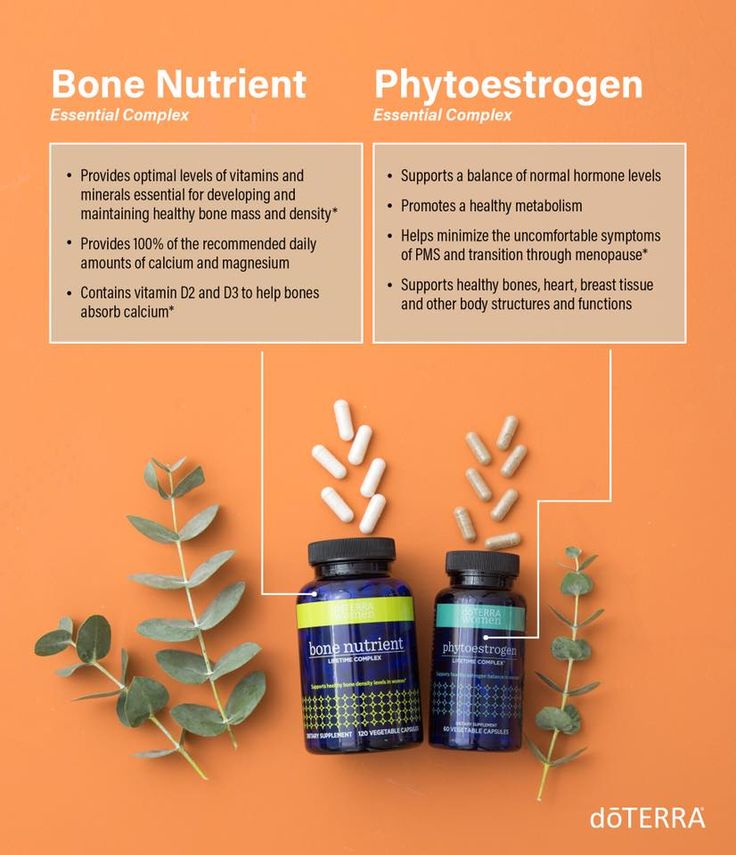How to absorb calcium. Calcium Absorption: Optimizing Intake and Supplementation for Bone Health
How does calcium impact bone health. What are the recommended daily calcium intake levels. Which foods are rich in calcium. When should you consider calcium supplements. What are the potential risks of calcium supplementation.
The Vital Role of Calcium in Human Health
Calcium is an essential mineral that plays a crucial role in maintaining strong bones and teeth. However, its importance extends far beyond skeletal health. This mineral is vital for various bodily functions, including muscle contraction, nerve signaling, and blood clotting.
Why is calcium so important for our bodies? Here’s a breakdown of its key functions:
- Bone and tooth formation and maintenance
- Muscle contraction and relaxation
- Nerve signal transmission
- Blood vessel constriction and dilation
- Hormone secretion
- Enzyme activation
Despite its critical importance, many people struggle to maintain adequate calcium levels through diet alone. This has led to increased interest in calcium supplementation as a means of ensuring optimal intake.

Understanding Calcium Requirements Across Different Life Stages
Calcium needs vary throughout our lives, with certain periods requiring higher intake to support growth and prevent bone loss. The recommended daily allowance (RDA) for calcium differs based on age and gender:
| Age Group | Recommended Daily Calcium Intake |
|---|---|
| Adults 19-50 years | 1,000 mg |
| Women 51+ years | 1,200 mg |
| Men 51-70 years | 1,000 mg |
| Men 71+ years | 1,200 mg |
It’s important to note that the upper limit for calcium intake is 2,500 mg per day for adults aged 19-50 and 2,000 mg for those 51 and older. Exceeding these limits may lead to adverse health effects.
Why do calcium needs change with age?
As we age, our bodies become less efficient at absorbing calcium from food sources. Additionally, bone loss accelerates in older adults, particularly in postmenopausal women. This increased calcium requirement helps combat age-related bone density decline and reduces the risk of osteoporosis.
Dietary Sources of Calcium: Maximizing Natural Intake
While supplements can be beneficial, obtaining calcium through a balanced diet is the ideal approach. Many foods are naturally rich in calcium or fortified to boost their calcium content. Here are some excellent dietary sources of calcium:

- Dairy products (milk, yogurt, cheese)
- Dark green leafy vegetables (kale, collard greens, spinach)
- Fish with edible bones (sardines, canned salmon)
- Calcium-fortified foods (certain juices, cereals, and plant-based milk alternatives)
- Nuts and seeds (almonds, Brazil nuts, sesame seeds)
- Legumes (soybeans, white beans, chickpeas)
To maximize calcium absorption from these foods, it’s crucial to consider factors that can enhance or inhibit its uptake.
Factors affecting calcium absorption
Several factors can influence how effectively your body absorbs dietary calcium:
- Vitamin D levels: Adequate vitamin D is essential for optimal calcium absorption
- Phytic acid and oxalic acid: Present in some plant foods, these compounds can bind to calcium and reduce absorption
- Protein intake: Moderate protein consumption can enhance calcium absorption
- Age: Calcium absorption efficiency decreases with age
- Caffeine and alcohol: Excessive consumption may increase calcium excretion
The Role of Vitamin D in Calcium Absorption
Vitamin D plays a crucial role in calcium metabolism and absorption. Without adequate vitamin D, the body cannot effectively absorb calcium from the diet, regardless of intake. This symbiotic relationship underscores the importance of maintaining sufficient levels of both nutrients.
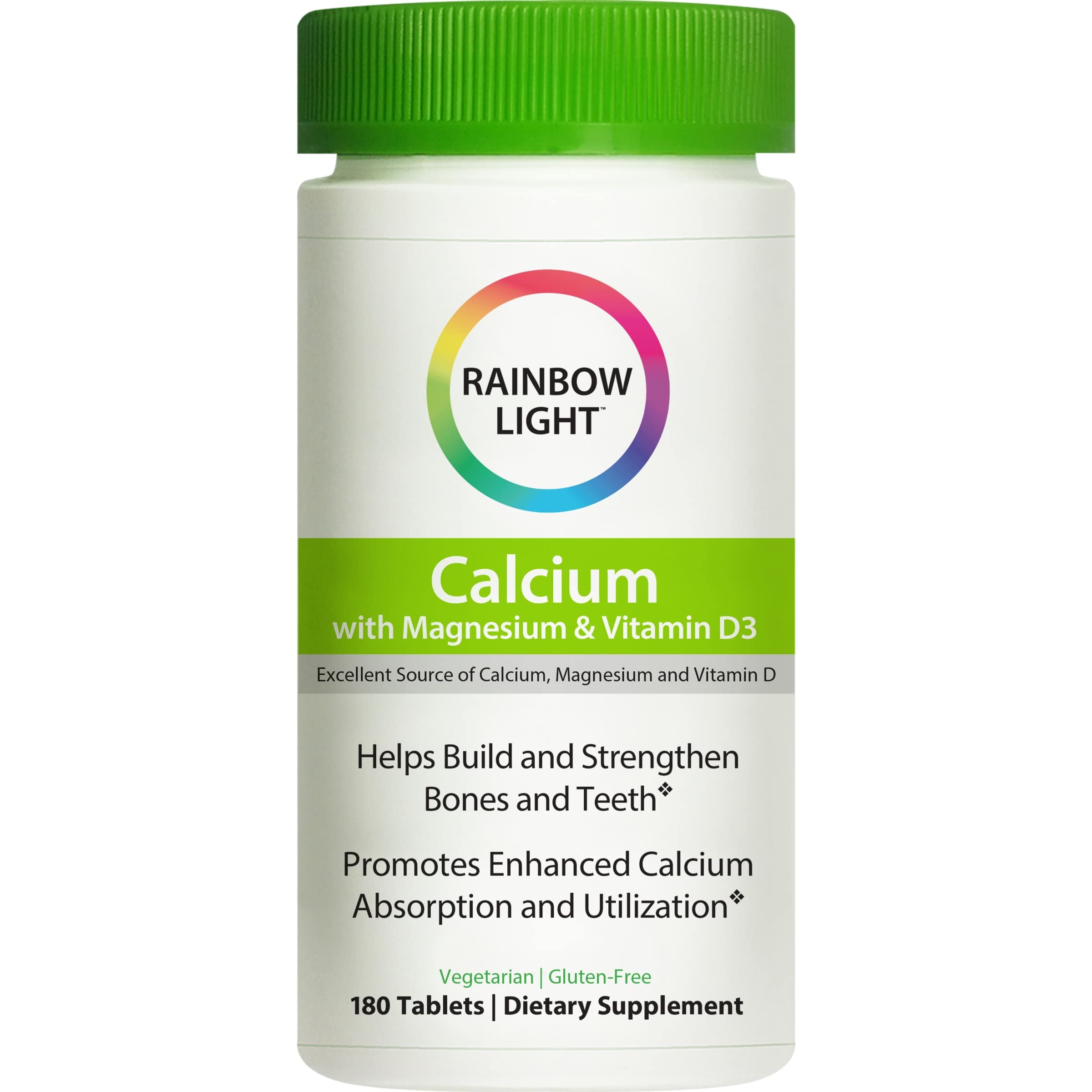
How does vitamin D aid calcium absorption? Vitamin D facilitates the production of calcium-binding proteins in the intestine, which help transport calcium from the digestive system into the bloodstream. It also promotes calcium reabsorption in the kidneys, reducing urinary calcium loss.
Sources of vitamin D
To ensure optimal calcium absorption, it’s important to maintain adequate vitamin D levels. Sources of vitamin D include:
- Sunlight exposure (the body produces vitamin D when skin is exposed to UVB rays)
- Fatty fish (salmon, mackerel, sardines)
- Egg yolks
- Fortified foods (milk, orange juice, cereals)
- Supplements (vitamin D3 is generally recommended over D2)
The recommended daily intake of vitamin D for most adults is 600-800 IU (15-20 micrograms), with higher doses sometimes necessary for individuals with deficiency or increased risk factors.
Calcium Supplementation: When and How to Supplement Effectively
While a balanced diet should be the primary source of calcium, supplements can play a valuable role in meeting daily requirements for some individuals. But when should you consider calcium supplementation?

Calcium supplements may be beneficial for:
- Individuals following a vegan or dairy-free diet
- Those with lactose intolerance who limit dairy intake
- Postmenopausal women at risk of osteoporosis
- People with conditions that impair calcium absorption (e.g., celiac disease, inflammatory bowel disease)
- Individuals taking medications that interfere with calcium metabolism (e.g., long-term corticosteroid use)
If you fall into one of these categories or are concerned about your calcium intake, consult with a healthcare provider to determine if supplementation is appropriate for you.
Types of calcium supplements
When choosing a calcium supplement, it’s important to consider the different forms available and their absorption rates:
- Calcium carbonate (40% elemental calcium): Inexpensive and widely available, best absorbed with food
- Calcium citrate (21% elemental calcium): More easily absorbed, can be taken with or without food
- Calcium gluconate (9% elemental calcium): Lower calcium content, may require more tablets to meet needs
- Calcium lactate (13% elemental calcium): Another option, though less commonly used
Calcium citrate is often recommended for older adults or those with reduced stomach acid, as it’s more easily absorbed in these conditions.

Potential Risks and Side Effects of Calcium Supplementation
While calcium supplements can be beneficial, they’re not without potential risks. It’s crucial to be aware of possible side effects and interactions before starting supplementation.
Common side effects of calcium supplements
Some individuals may experience mild gastrointestinal symptoms when taking calcium supplements, including:
- Constipation
- Bloating
- Gas
- Nausea
These side effects can often be minimized by starting with a lower dose and gradually increasing intake, or by switching to a different form of calcium supplement.
Potential health risks
Some studies have raised concerns about potential long-term risks associated with high-dose calcium supplementation, including:
- Increased risk of kidney stones
- Possible link to cardiovascular events (though evidence is mixed and inconclusive)
- Potential interference with absorption of other minerals (e.g., iron, zinc)
It’s important to note that these risks are primarily associated with excessive calcium intake, particularly from supplements. Maintaining intake within recommended limits and prioritizing dietary sources can help mitigate these potential risks.
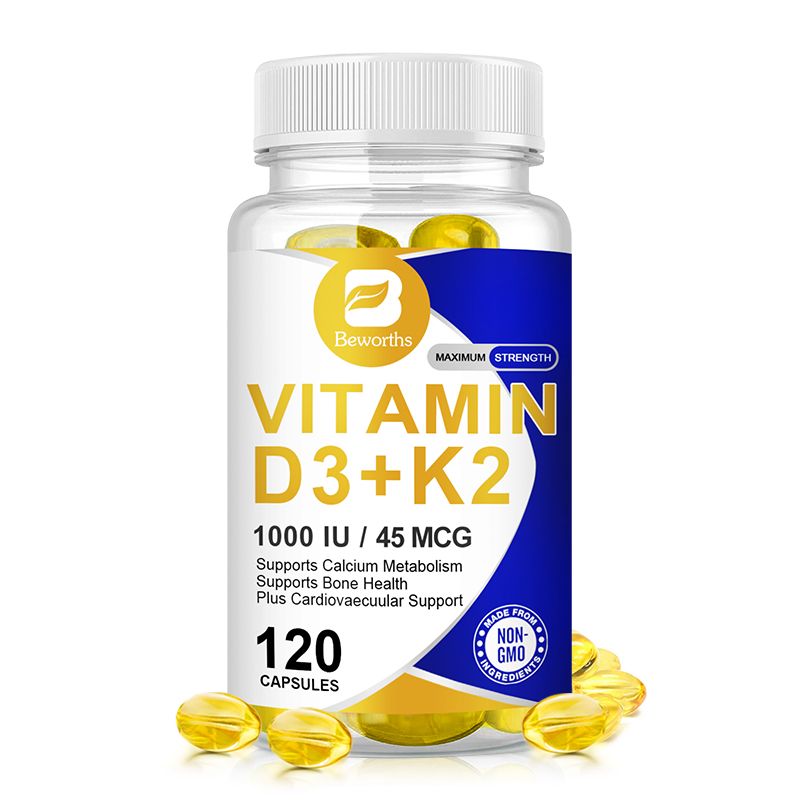
Optimizing Calcium Absorption: Strategies for Maximum Benefit
To ensure you’re getting the most out of your calcium intake, whether from diet or supplements, consider implementing these strategies:
- Spread calcium intake throughout the day: The body can only absorb a limited amount of calcium at once, typically around 500 mg. Dividing your intake across meals can improve overall absorption.
- Pair calcium with vitamin D: As discussed earlier, vitamin D is crucial for calcium absorption. Ensure adequate vitamin D intake through diet, sunlight exposure, or supplements.
- Consider calcium citrate for better absorption: If using supplements, calcium citrate may be more easily absorbed, especially for older adults or those with reduced stomach acid.
- Be mindful of interactions: Certain medications and supplements can interfere with calcium absorption. Consult your healthcare provider about potential interactions.
- Balance your diet: Include a variety of calcium-rich foods in your diet to ensure you’re getting other important nutrients that support bone health, such as magnesium, vitamin K, and potassium.
By implementing these strategies, you can maximize the benefits of your calcium intake and support overall bone health.
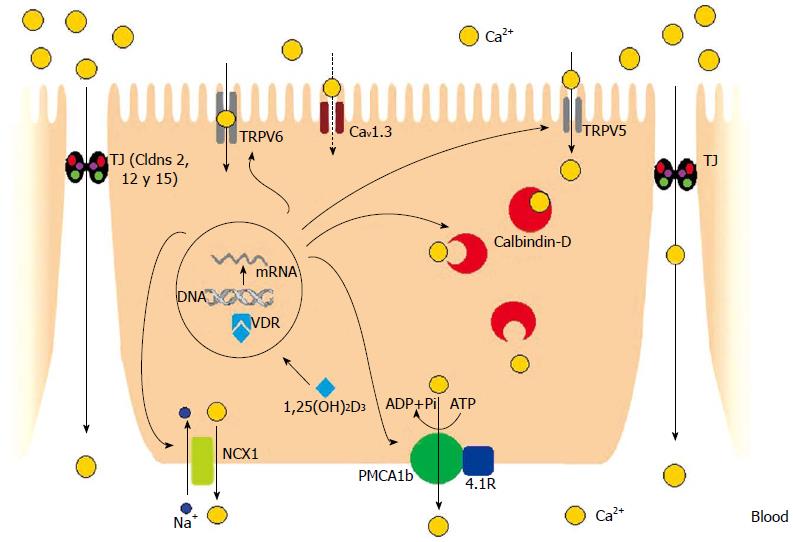
The Future of Calcium Research: Emerging Trends and Potential Benefits
As our understanding of calcium’s role in human health continues to evolve, researchers are exploring new areas of potential benefit beyond bone health. Some emerging areas of calcium research include:
Calcium and weight management
Some studies suggest that adequate calcium intake may play a role in weight management and fat metabolism. While more research is needed, preliminary evidence indicates that calcium may help regulate fat storage and breakdown in the body.
Calcium and cardiovascular health
The relationship between calcium intake and cardiovascular health remains a topic of ongoing research. While some studies have raised concerns about high-dose calcium supplementation, others suggest that adequate calcium intake from dietary sources may have protective effects on heart health.
Calcium and cancer prevention
Emerging research is exploring the potential role of calcium in cancer prevention, particularly for colorectal cancer. Some studies have shown a possible protective effect of calcium against certain types of cancer, though more research is needed to confirm these findings.

Novel calcium formulations
Researchers are developing new calcium formulations aimed at improving absorption and reducing side effects. These include nanoparticle-based supplements and calcium-fortified foods designed to enhance bioavailability.
As research in these areas progresses, our understanding of calcium’s role in overall health may expand, potentially leading to new recommendations and applications for this essential mineral.
Calcium and calcium supplements: Achieving the right balance
Calcium and calcium supplements: Achieving the right balance
Calcium is important for bone health. See how much you need and how to get it.
By Mayo Clinic Staff
Calcium is important for bone health throughout your life. Although diet is the best way to get calcium, calcium supplements may be an option if your diet falls short.
Before you consider calcium supplements, be sure you understand how much calcium you need, the pros and cons of calcium supplements, and which type of supplement to choose.
The benefits of calcium
Your body needs calcium to build and maintain strong bones. Your heart, muscles and nerves also need calcium to function properly.
Some studies suggest that calcium, along with vitamin D, may have benefits beyond bone health: perhaps protecting against cancer, diabetes and high blood pressure. But evidence about such health benefits is not definitive.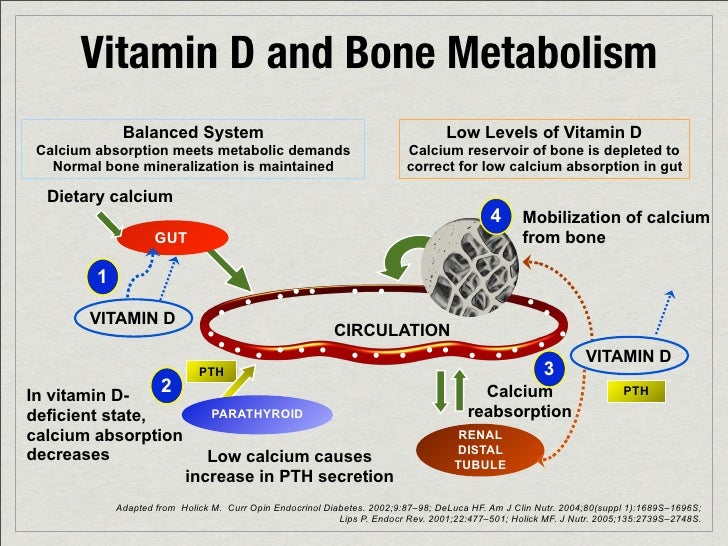
The risks of too little calcium
If you don’t get enough calcium, you could face health problems related to weak bones:
- Children may not reach their full potential adult height.
- Adults may have low bone mass, which is a risk factor for osteoporosis.
Many Americans don’t get enough calcium in their diets. Children and adolescents are at risk, but so are adults age 50 and older.
Calcium requirements
How much calcium you need depends on your age and sex.
| Men | |
|---|---|
| 19-50 years | 1,000 mg |
| 51-70 years | 1,000 mg |
| 71 and older | 1,200 mg |
| Women | |
| 19-50 years | 1,000 mg |
| 51 and older | 1,200 mg |
The recommended upper limit for calcium is 2,500 mg a day for adults 19 to 50. For those 51 and older, the limit is 2,000 mg a day.
For those 51 and older, the limit is 2,000 mg a day.
Calcium and diet
Your body doesn’t produce calcium, so you must get it through other sources. Calcium can be found in a variety of foods, including:
- Dairy products, such as cheese, milk and yogurt
- Dark green leafy vegetables, such as broccoli and kale
- Fish with edible soft bones, such as sardines and canned salmon
- Calcium-fortified foods and beverages, such as soy products, cereal and fruit juices, and milk substitutes
To absorb calcium, your body also needs vitamin D. A few foods naturally contain small amounts of vitamin D, such as canned salmon with bones and egg yolks. You can also get vitamin D from fortified foods and sun exposure. The RDA for vitamin D is 600 international units (15 micrograms) a day for most adults.
Who should consider calcium supplements?
Even if you eat a healthy, balanced diet, you may find it difficult to get enough calcium if you:
- Follow a vegan diet
- Have lactose intolerance and limit dairy products
- Consume large amounts of protein or sodium, which can cause your body to excrete more calcium
- Are receiving long-term treatment with corticosteroids
- Have certain bowel or digestive diseases that decrease your ability to absorb calcium, such as inflammatory bowel disease or celiac disease
In these situations, calcium supplements may help you meet your calcium requirements. Talk with your doctor or dietitian about whether calcium supplements are right for you.
Talk with your doctor or dietitian about whether calcium supplements are right for you.
Do calcium supplements have risks?
Calcium supplements aren’t for everyone. For instance, if you have a health condition that causes excess calcium in your bloodstream (hypercalcemia), you should avoid calcium supplements.
It’s not definitive, but there may be a link between high-dose calcium supplements and heart disease. The evidence is mixed and more research is needed before doctors know the effect calcium supplements may have on heart attack risk.
A similar controversy surrounds calcium and prostate cancer. Some studies have shown that high calcium intake from dairy products and supplements may increase risk, whereas another more recent study showed no increased risk of prostate cancer associated with total calcium, dietary calcium or supplemental calcium intakes.
Until more is known about these possible risks, it’s important to be careful to avoid excessive amounts of calcium. As with any health issue, it’s important to talk to your doctor to determine what’s right for you.
As with any health issue, it’s important to talk to your doctor to determine what’s right for you.
Types of calcium supplements
Several different kinds of calcium compounds are used in calcium supplements. Each compound contains varying amounts of the mineral calcium — referred to as elemental calcium. Common calcium supplements may be labeled as:
- Calcium carbonate (40% elemental calcium)
- Calcium citrate (21% elemental calcium)
- Calcium gluconate (9% elemental calcium)
- Calcium lactate (13% elemental calcium)
The two main forms of calcium supplements are carbonate and citrate. Calcium carbonate is cheapest and therefore often a good first choice. Other forms of calcium in supplements include gluconate and lactate.
In addition, some calcium supplements are combined with vitamins and other minerals. For instance, some calcium supplements may also contain vitamin D or magnesium. Check the ingredient list to see which form of calcium your calcium supplement is and what other nutrients it may contain.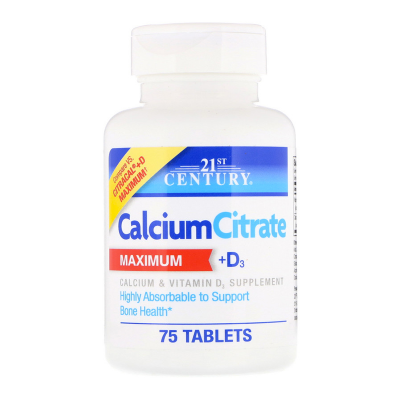 This information is important if you have any health or dietary concerns.
This information is important if you have any health or dietary concerns.
Choosing calcium supplements
When looking at calcium supplements, consider these factors:
Amount of calcium
Elemental calcium is important because it’s the actual amount of calcium in the supplement. It’s what your body absorbs for bone growth and other health benefits. The Supplement Facts label on calcium supplements is helpful in determining how much calcium is in one serving. As an example, calcium carbonate is 40% elemental calcium, so 1,250 milligrams (mg) of calcium carbonate contains 500 mg of elemental calcium. Be sure to note the serving size (number of tablets) when determining how much calcium is in one serving.
Tolerability
Calcium supplements cause few, if any, side effects. But side effects can sometimes occur, including gas, constipation and bloating. In general, calcium carbonate is the most constipating. You may need to try a few different brands or types of calcium supplements to find one that you tolerate the best.
What prescriptions you take
Calcium supplements can interact with many different prescription medications, including blood pressure medications, synthetic thyroid hormones, bisphosphonates, antibiotics and calcium channel blockers. Depending on your medications, you may need to take the supplement with your meals or between meals. Ask your doctor or pharmacist about possible interactions and which type of calcium supplement would work for you.
Quality and cost
Manufacturers are responsible for ensuring that supplements are safe and claims are truthful. Some companies have their products independently tested by U.S. Pharmacopeial Convention (USP), ConsumerLab.com (CL) or NSF International. Supplements that bear the USP, CL or NSF abbreviation meet voluntary industry standards for quality, purity, potency, and tablet disintegration or dissolution. Different types of calcium supplements have different costs. Comparison shop if cost is a factor for you.
Comparison shop if cost is a factor for you.
Supplement form
Calcium supplements are available in a variety of forms, including tablets, capsules, chews, liquids and powders. If you have trouble swallowing pills, you may want a chewable or liquid calcium supplement.
Absorbability
Your body must be able to absorb the calcium for it to be effective. All varieties of calcium supplements are better absorbed when taken in small doses (500 mg or less) at mealtimes. Calcium citrate is absorbed equally well when taken with or without food and is a form recommended for individuals with low stomach acid (more common in people over 50 or taking acid blockers), inflammatory bowel disease or absorption disorders.
More isn’t always better: Too much calcium has risks
Dietary calcium is generally safe, but more isn’t necessarily better, and excessive calcium doesn’t provide extra bone protection.
If you take calcium supplements and eat calcium-fortified foods, you may be getting more calcium than you realize.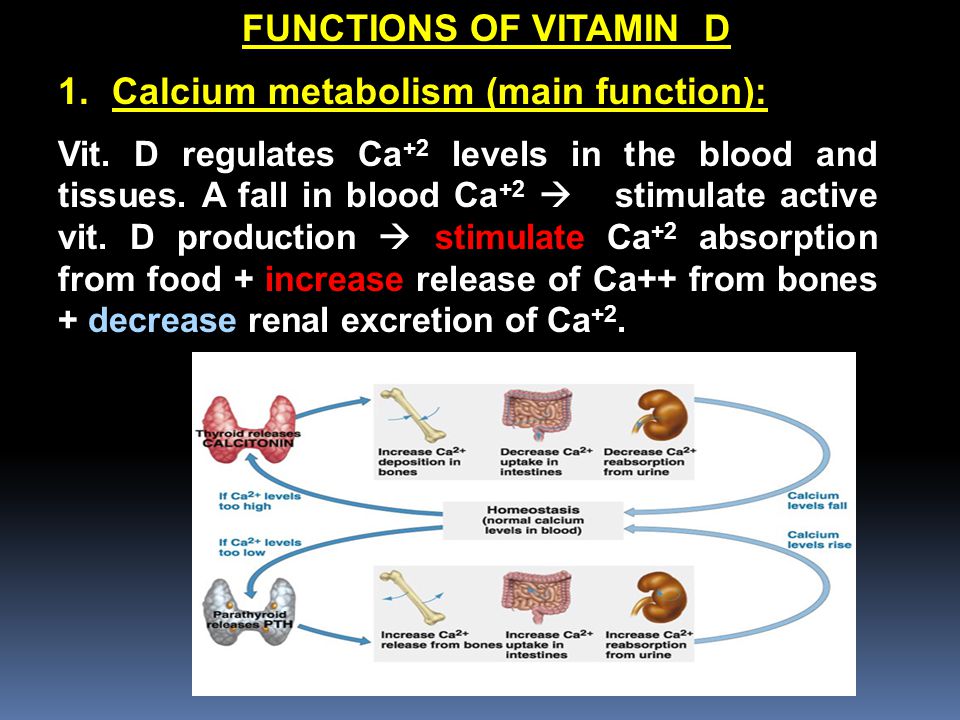 Check food and supplement labels to monitor how much total calcium you’re getting a day and whether you’re achieving the RDA but not exceeding the recommended upper limit. Be sure to tell your doctor if you’re taking calcium supplements.
Check food and supplement labels to monitor how much total calcium you’re getting a day and whether you’re achieving the RDA but not exceeding the recommended upper limit. Be sure to tell your doctor if you’re taking calcium supplements.
Nov. 14, 2020
Show references
- Calcium and vitamin D: Important at every age. National Institutes of Health. https://www.bones.nih.gov/health-info/bone/bone-health/nutrition/calcium-and-vitamin-d-important-every-age. Accessed Oct. 18, 2020.
- Calcium. Natural Medicines. http://naturalmedicines.therapeuticresearch.com. Accessed Oct. 18, 2020.
- Calcium fact sheet for professionals. Office of Dietary Supplements. https://ods.od.nih.gov/factsheets/Calcium-HealthProfessional/. Accessed Oct. 18, 2020.
- Rosen HN. Calcium and vitamin D supplementation in osteoporosis. https://www.uptodate.com/contents/search. Accessed Oct. 18, 2020.
- 2015-2020 Dietary Guidelines for Americans. U.S. Department of Health and Human Services and U.
 S. Department of Agriculture. https://health.gov/our-work/food-nutrition/2015-2020-dietary-guidelines/guidelines/introduction/dietary-guidelines-for-americans/. Accessed Oct. 18, 2020.
S. Department of Agriculture. https://health.gov/our-work/food-nutrition/2015-2020-dietary-guidelines/guidelines/introduction/dietary-guidelines-for-americans/. Accessed Oct. 18, 2020. - Dietary Guidelines Advisory Committee. Scientific report of the 2020 Dietary Guidelines Advisory Committee: Advisory report to the Secretary of Agriculture and the Secretary of Health and Human Services. U.S. Department of Agriculture, Agricultural Research Service. https://www.dietaryguidelines.gov/2020-advisory-committee-report. Accessed Oct. 18, 2020.
- What people with celiac disease need to know about osteoporosis. NIH Osteoporosis and Related Bone Diseases National Resource Center. https://www.bones.nih.gov/health-info/bone/osteoporosis/conditions-behaviors/celiac. Accessed Oct. 18, 2020.
- Dietary supplements verification program. U.S. Pharmacopeial Convention. https://www.usp.org/verification-services/dietary-supplements-verification-program. Accessed Oct. 18, 2020.

- About ConsumerLab.com. ConsumerLab.com. https://www.consumerlab.com/aboutcl.asp. Accessed Oct. 18, 2020.
- What is third-party certification? NSF International. https://www.nsf.org/about-nsf/what-is-third-party-certification. Accessed Oct. 18, 2020.
See more In-depth
Products and Services
- The Mayo Clinic Diet Online
- Book: The Mayo Clinic Diet
.
Calcium and Bone Health – HelpGuide.org
healthy eating
Calcium is the key to lifelong bone health. Learn how to eat to strengthen your bones and prevent osteoporosis.
What are the health benefits of calcium?
Calcium is a key nutrient that many of us overlook in our diets. Almost every cell in the body uses calcium in some way, including the nervous system, muscles, and heart. Your body uses calcium to build healthy bones and teeth, keep them strong as you age, send messages through the nervous system, help your blood clot, your muscles contract, and regulate the heart’s rhythm.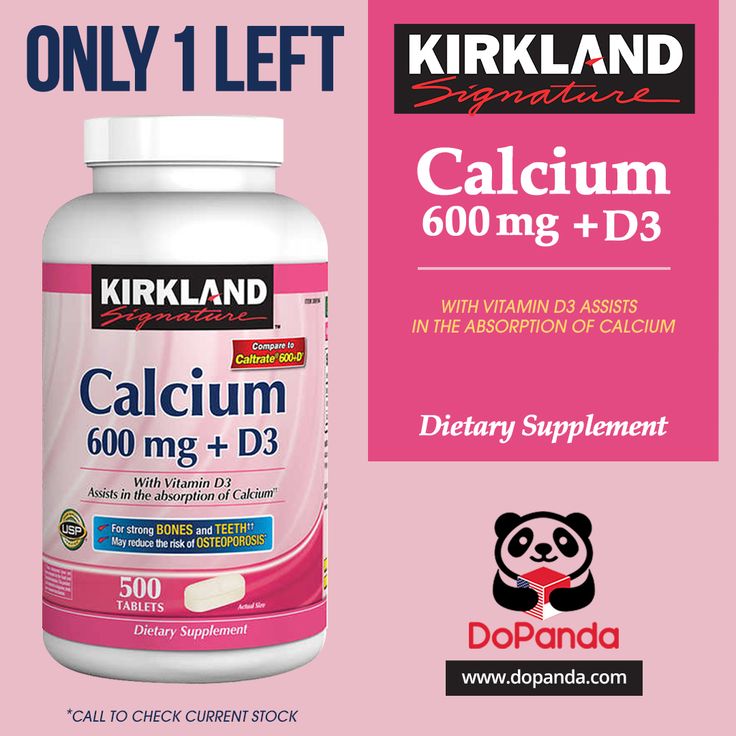
If you don’t get enough calcium in your diet, your body will take it from your bones to ensure normal cell function, which can lead to weakened bones or osteoporosis. Calcium deficiency can contribute to mood problems such as irritability, anxiety, depression, and difficulty sleeping.
Despite these vital functions, many of us are confused about calcium and how to best protect our bones and overall health. How much calcium should you get? Where should you get it? And what’s the deal with vitamin D, magnesium, and other nutrients that help calcium do its job? This confusion means that many of us are not getting the recommended daily amount of calcium and approximately one in two women (and about one in four men) over the age of 50 will break a bone due to osteoporosis.
Getting enough calcium in your diet is not just important for older people. It’s also vital for children, teens, and young adults since we continue building bone mass into our mid-20s. From then on, we can lose bone mass without sufficient calcium in our diets. Whatever your age or gender, it’s vital to include calcium-rich foods in your diet, limit those that deplete calcium, and get enough magnesium and vitamins D and K to help calcium do its job.
Whatever your age or gender, it’s vital to include calcium-rich foods in your diet, limit those that deplete calcium, and get enough magnesium and vitamins D and K to help calcium do its job.
The calcium and osteoporosis connection
Osteoporosis is a “silent” disease characterized by loss of bone mass. Due to weakened bones, fractures become commonplace, which leads to serious health risks. People with osteoporosis often don’t recover after a fall and it is the second most common cause of death in women, mostly those aged 60 and older. Men are also at risk of developing osteoporosis, but typically 5 to 10 years later than women. For most people, osteoporosis is preventable, and getting enough calcium in your diet is the first place to start.
| How much calcium do you need? | ||
| Age | Males | Females |
| Newborn to 6 months | 200 mg/day | 200 mg/day |
| 6 to 12 months | 260 mg/day | 260 mg/day |
| 1 to 3 years | 700 mg/day | 700 mg/day |
| 4-8 years | 1,000 mg/day | 1,000 mg/day |
| 9 to 18 years | 1,300 mg/day | 1,300 mg/day |
| 19 to 50 years | 1,000 mg/day | 1,000 mg/day |
| 51 to 70 years | 1,000 mg/day | 1,200 mg/day |
| 71+ years | 1,000 mg/day | 1,000 mg/day |
| Source: National Institutes of Health | ||
Food is the best source of calcium
Doctors recommend that you get as much of your daily calcium needs as possible from food and use only low-dose supplements to make up any shortfall.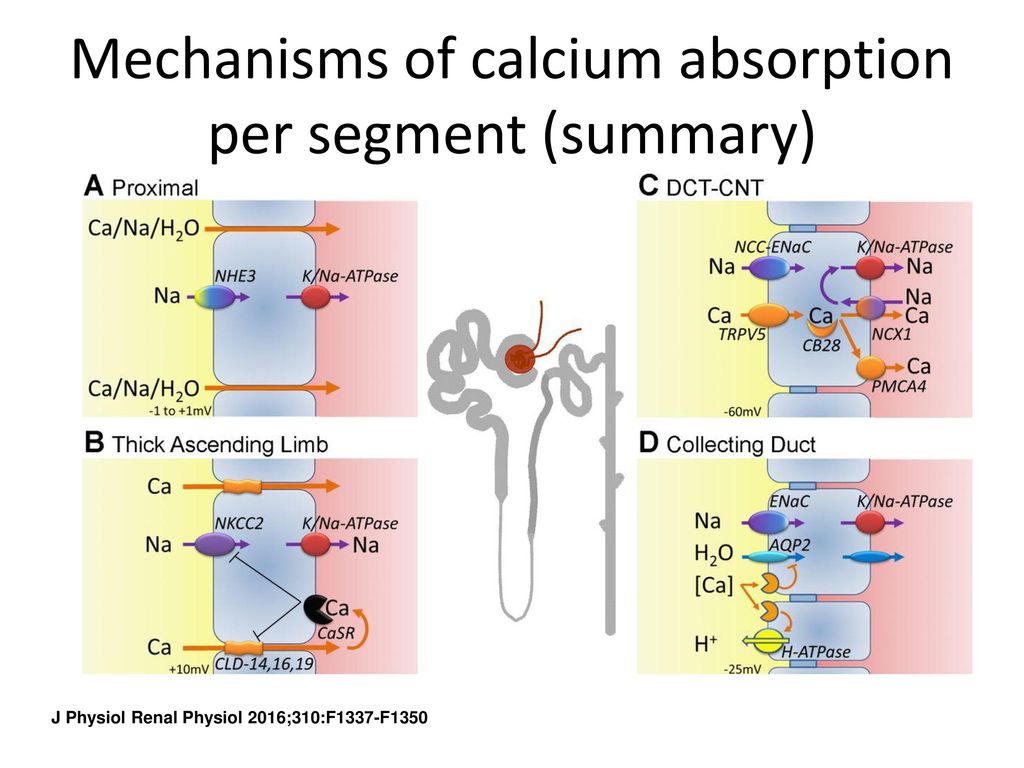 Your body is better able to absorb calcium from food than it can from supplements. In fact, studies show that even though people who take calcium supplements have a higher average intake, those who get their calcium from food have stronger bones. Furthermore, using high-dose calcium supplements may increase your risk of kidney stones and heart disease.
Your body is better able to absorb calcium from food than it can from supplements. In fact, studies show that even though people who take calcium supplements have a higher average intake, those who get their calcium from food have stronger bones. Furthermore, using high-dose calcium supplements may increase your risk of kidney stones and heart disease.
Good food sources of calcium
Good sources of calcium include dairy products, leafy green vegetables, certain fish, oatmeal and other grains, tofu, cabbage, summer squash, green beans, garlic, sea vegetables and calcium-fortified foods such as cereals and orange juice.
| Good food sources of calcium | |
| Food | Milligrams (mg) per serving |
| Yogurt, plain, low fat, 8 ounces | 415 |
| Mozzarella, part skim, 1.5 ounces Cheddar cheese, 1.5 ounces Cottage cheese, (1% milk fat), 8 ounces Cheese, cream, regular, 1 tablespoon | 333 307 138 14 |
| Milk, nonfat, 8 ounces Milk, reduced-fat (2% milk fat), 8 ounces Milk, whole (3. Soymilk, calcium-fortified, 8 ounces | 299 293 276 299 |
| Ready-to-eat cereal, calcium-fortified, 1 cup | 100-1,000 |
| Sardines, canned in oil, with bones, 3 ounces Salmon, pink, canned, solids with bone, 3 ounces | 325 181 |
| Tofu, firm, made with calcium sulfate, 1/2 cup Tofu, soft, made with calcium sulfate, 1/2 cup | 253 138 |
| Turnip greens, fresh, boiled, 1/2 cup Kale, raw, chopped, 1 cup Kale, fresh, cooked, 1 cup Chinese cabbage, bok choy, raw, shredded, 1 cup Broccoli, raw, 1/2 cup | 99 100 94 74 21 |
| Source: National Institutes of Health | |
Calcium and whole milk dairy: The pros and cons
While milk and other dairy products contain a lot of calcium in a highly absorbable form, there may be some potential downsides.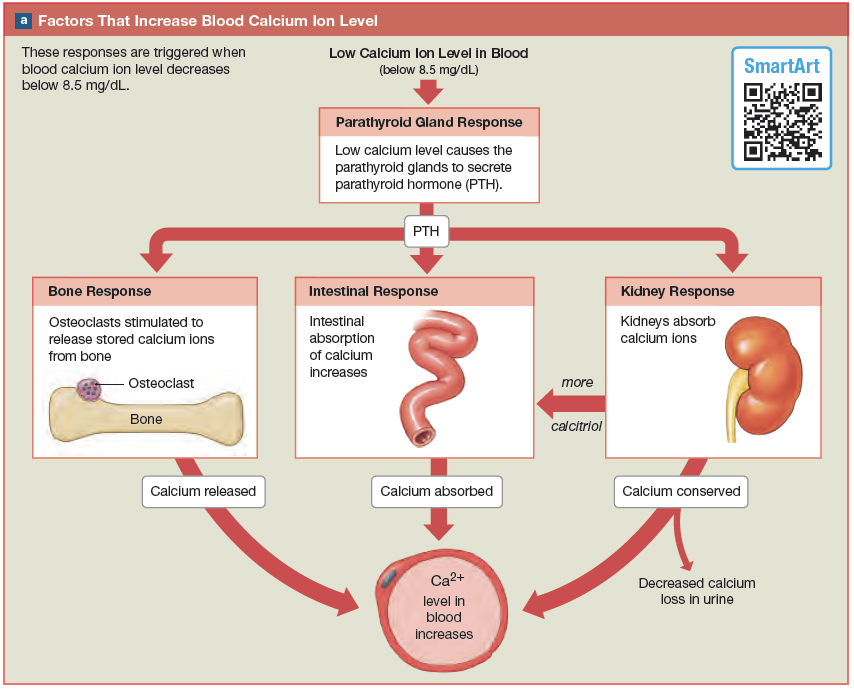
Whole milk dairy products are often high in saturated fat. Many prominent health organizations recommend that you limit your saturated fat intake and choose low- or non-fat dairy foods, though an increasing body of research shows that eating whole-milk dairy products is linked to less body fat and lower levels of obesity. Low-fat and non-fat dairy products also tend to contain lots of hidden sugar to make up for the loss of taste, which can be far more detrimental to your health and weight than the saturated fat it’s replaced.
Milk can contain high levels of estrogen. Some studies show a possible link between the natural estrogens found in milk and breast, prostate, and testicular cancer. Part of the problem is modern dairy practices, where the cows are fed synthetic hormones and antibiotics, kept continuously pregnant, and milked over 300 days per year. The more pregnant the cow, the higher the hormones in the milk. Organic milk comes from cows that are grass-fed and not given synthetic hormones or other additives, although organic milk can still be high in natural hormones. Because both natural and synthetic hormones are found in the milk fat, skim milk has a much lower level.
Because both natural and synthetic hormones are found in the milk fat, skim milk has a much lower level.
Some people are lactose intolerant, meaning they are unable to digest lactose, a sugar found in milk and milk products. Symptoms range from mild to severe, and include cramping, bloating, gas, and diarrhea. Beyond the discomfort it causes, lactose intolerance can also interfere with calcium absorption from dairy.
Tips for upping your calcium intake
To boost your daily intake, try to include calcium-rich foods in multiple meals or snacks.
Tips for adding more calcium from dairy to your diet
- Use milk instead of water when making oatmeal or other hot breakfast cereals.
- Substitute milk for some of the liquid in soups such as tomato, squash, pumpkin, curries, etc.
- Milk can be added to many sauces or used as the base in sauces such as Alfredo and Béchamel sauce.
- Make whole-wheat pancakes and waffles using milk or yogurt.

- Get creative with plain yogurt. Use it to make a dressing or a dip, or try it on potatoes in place of sour cream.
- Add milk or yogurt to a fruit smoothie. You can even freeze blended smoothies for popsicles.
- Enjoy cheese for dessert or as a snack. Try cheddar, mozzarella, Gouda, jack, Parmesan, or a type of cheese you’ve never had before.
Tips for getting more calcium from non-dairy sources
Greens can easily be added to soups, casseroles, or stir-fries. Opt for kale, collard greens, turnip greens, dandelion greens, mustard greens, beet greens, broccoli, and cabbage. Spice up these and other dishes with garlic, basil, thyme, oregano, and rosemary to add more nutrients.
Eat dark green leafy salads with your meals. Try romaine hearts, arugula, butter lettuce, mesclun, watercress, or red leaf lettuce (avoid iceberg lettuce as it has very little nutrient value).
Add extra servings of veggies to your meals, i. e. asparagus, fresh green peas, broccoli, cabbage, okra, bok choy.
e. asparagus, fresh green peas, broccoli, cabbage, okra, bok choy.
Top salads or make a sandwich with canned fish with bones, such as sardines and pink salmon.
Use beans/legumes as part of your meals. They are wonderful in stews, chili, soup, or as the protein part of a meal. Try tofu, tempeh, black-eyed peas, black beans, and other dried beans. You can also snack on edamame.
Start your day with oats. Steel cut oats or rolled oats make a filling breakfast. For an added punch include cinnamon
Snack on nuts and seeds such as almonds and sesame seeds. You can also add these to your morning oatmeal.
Order or prepare sandwiches on whole grain wheat bread.
Beyond calcium: Other nutrients for healthy bones
When it comes to healthy bones and preventing osteoporosis, calcium alone is not enough. There are a number of other vital nutrients that help your body absorb and make use of the calcium you consume..jpg)
Magnesium
Why it’s important: Magnesium helps your body absorb and retain calcium to help build and strengthen bones and prevent osteoporosis. Since your body is not good at storing magnesium, it is vital to make sure you get enough of it in your diet.
How much do you need? For adult men, 400-420 mg daily. For adult women, 310-320 mg daily (more during pregnancy).
How to include more in your diet: Magnesium is found in nuts (especially almonds and cashews), seeds (pumpkin, sesame, flax, sunflower), whole grains, seafood, legumes, tofu, and many vegetables, including spinach, Swiss chard, summer squash, turnip and mustard greens, broccoli, sea vegetables, cucumbers, and celery. Reduce sugar and alcohol, which increase the excretion of magnesium.
Vitamin D
Why it’s important: Vitamin D helps the body absorb calcium and regulates calcium in the blood.
How much do you need? Up to age 70, 600 IU (international units) per day. Over 70, 800 IU per day.
Over 70, 800 IU per day.
How to include more in your diet: Your body synthesizes vitamin D when exposed to the sun. Spend at least 15 minutes outside in the sun each day and include good food sources of vitamin D in your diet, such as fortified milk, eggs, cheese, fortified cereal, butter, cream, fish, shrimp, and oysters.
Phosphorous
Why it’s important: Phosphorous works with calcium to build bones. But again, it’s important to get the balance right: too much phosphorous will cause your body to absorb less calcium and can even be toxic.
How much do you need? For adults, 700 mg a day.
How to include more in your diet: Good sources include dairy, fish (cod, salmon, tuna), pork, poultry, lentils, nuts, and whole grains.
Vitamin K
Why it’s important: Vitamin K helps the body regulate calcium and form strong bones.
How much do you need? Adult men, 120 micrograms daily. Adult women, 90 micrograms daily.
Adult women, 90 micrograms daily.
How to include more in your diet: You should be able to meet the daily recommendation for vitamin K by simply eating one or more servings per day of broccoli, Brussels sprouts, dark green lettuce, collard greens, or kale.
Vitamin C and vitamin B12
New research suggests that vitamin C and vitamin B12 may also play important roles in bone health and the prevention of osteoporosis.
Consuming foods rich in vitamin C may help to prevent bone loss. Good sources include citrus fruit, such as oranges and grapefruit, strawberries, kiwi, mango, Brussels sprouts, and green bell peppers.
Studies have also found a link between vitamin B12 levels and bone density and osteoporosis. Good sources of B12 include seafood such as salmon, haddock, and canned tuna, as well as milk, yogurt, eggs, and cottage cheese.
Other tips for building strong bones and preventing osteoporosis
In addition to adding calcium-rich foods to your diet, you can also minimize the amount of calcium you lose by reducing your intake of foods and other substances that deplete your body’s calcium stores.
Lower your salt intake. Eating too much salt can contribute to calcium loss and bone breakdown. Reduce packaged and convenience foods, fast foods, and processed meats which are often high in sodium. Instead of salt, try using herbs and spices to enhance the taste of food.
Limit the caffeine you consume. Drinking more than 2 cups of coffee a day can lead to calcium loss. The amount lost can have a significant impact on older people with already low calcium levels. You can buffer the effects to an extent by drinking coffee with milk.
Watch your alcohol consumption. Drinking alcohol inhibits calcium absorption and disrupts your body’s calcium balance in a number of ways. Try to keep your alcohol consumption to no more than 7 drinks per week.
Beware of soft drinks. In order to balance the phosphates in soft drinks, your body draws calcium from your bones, which is then excreted. Opt for water or calcium-fortified orange juice instead.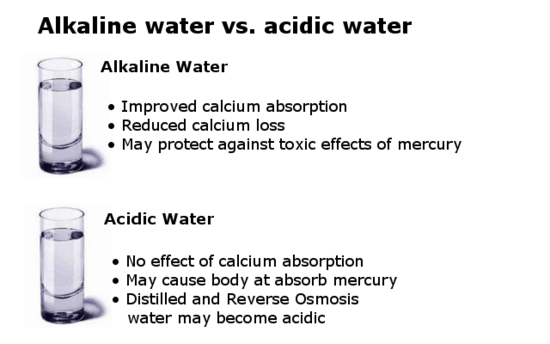
Exercise is crucial to lifelong bone health
When it comes to building and maintaining strong bones, exercise is essential, especially weight-bearing activities such as walking, dancing, jogging, weightlifting, stair climbing, racquet sports, and hiking. Find something that you enjoy doing and make it a regular activity.
Calcium supplements: What you need to know
While food is the best source of calcium, making up any shortfall in your diet with supplements is another option. But it’s important not to take too much.
Calcium citrate is a highly absorbable calcium compound.
Calcium ascorbate and calcium carbonate are not as easily absorbed as calcium citrate.
Be smart about calcium supplements
Don’t take more than 500 mg at a time. Your body can only absorb a limited amount of calcium at one time, so it is best to consume calcium in small doses throughout the day.
Don’t take more than the recommended amount for your age group.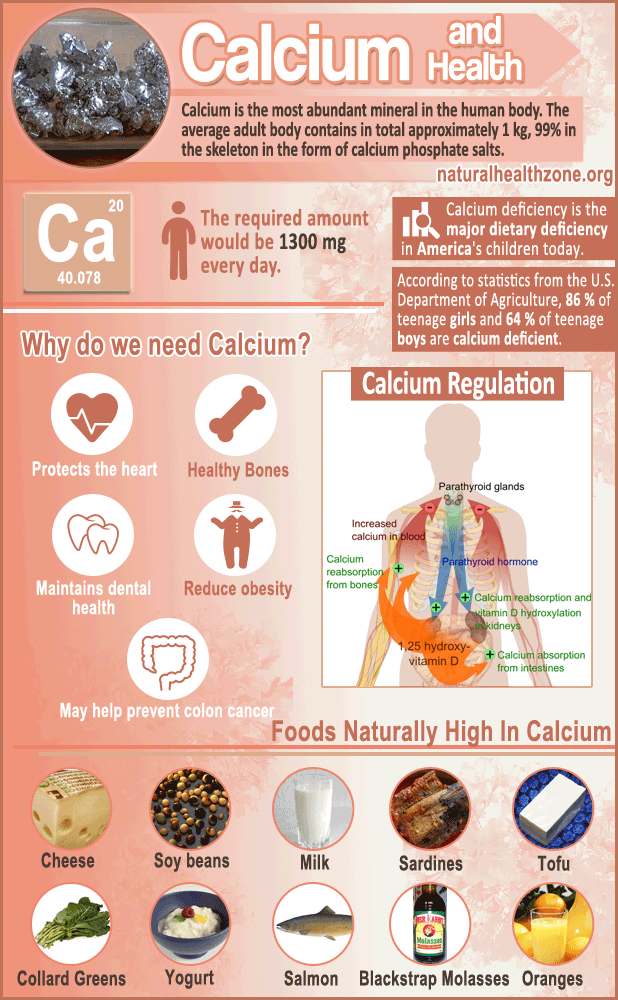 Take into account the amount of calcium you get from food. And remember: more isn’t better; it may damage the heart and have other negative health effects.
Take into account the amount of calcium you get from food. And remember: more isn’t better; it may damage the heart and have other negative health effects.
Take your calcium supplement with food. All supplemental forms of calcium are best absorbed when taken with food. If it’s not possible to take your supplement with food, choose calcium citrate.
Purity is important. It’s best to choose calcium supplements with labels that state “purified” or, if you’re in the U.S., have the USP (United States Pharmacopeia) symbol. Avoid supplements made from unrefined oyster shell, bone meal, or dolomite that don’t have the USP symbol because they may contain high levels of lead or other toxic metals.
Be aware of side effects. Some people do not tolerate calcium supplements as well as others and experience side effects such as acid rebound, gas, and constipation. For acid rebound, switch from calcium carbonate to calcium citrate. For gas or constipation, try increasing your intake of fluids and high-fiber foods.
For gas or constipation, try increasing your intake of fluids and high-fiber foods.
Check for possible drug interactions. Calcium, magnesium, and vitamin K supplements can interfere with other medications and vitamins you’re taking, including heart medicine, certain diuretics, antacids, blood thinners, and some cancer drugs. Talk with your doctor or pharmacist about possible interactions. Any medications that you take on an empty stomach should NOT be taken with calcium.
Authors: Melinda Smith, M.A., Lawrence Robinson, and Jeanne Segal, Ph.D.
Getting Enough Calcium and Vitamin D
Topic Overview
Why is it important to get enough calcium and vitamin D?
Your body needs vitamin D to absorb calcium. Calcium keeps your bones and muscles—including your heart—healthy and strong.
People who do not get enough calcium and vitamin D throughout life have an increased chance of having thin and brittle bones (osteoporosis) in their later years.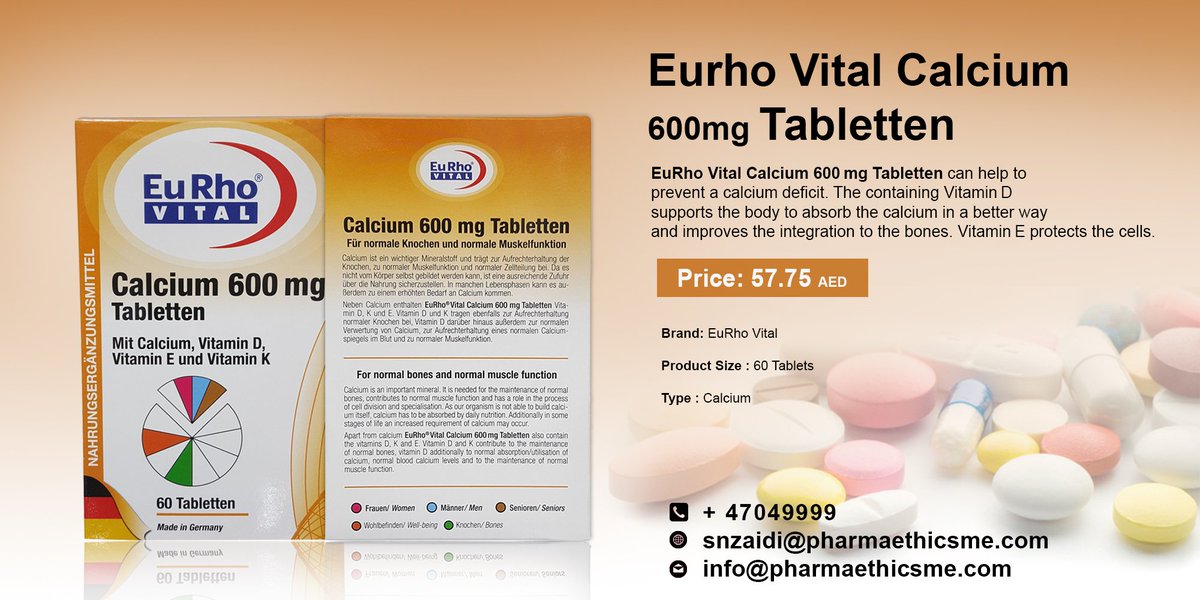 Thin and brittle bones break easily and can lead to serious injuries. This is why it is important for you to get enough calcium and vitamin D as a child and as an adult. It helps keep your bones strong as you get older and protects against possible breaks.
Thin and brittle bones break easily and can lead to serious injuries. This is why it is important for you to get enough calcium and vitamin D as a child and as an adult. It helps keep your bones strong as you get older and protects against possible breaks.
Your body also uses vitamin D to help your muscles absorb calcium and work well. If your muscles don’t get enough calcium, then they can cramp, hurt, or feel weak. You may have long-term (chronic) muscle aches and pains. Getting enough vitamin D helps prevent these problems.
Children who don’t get enough vitamin D may not grow as much as others their age. They also have a chance of getting a rare disease called rickets, which causes weak bones.
What is the recommended daily amount of calcium and vitamin D?
Calcium should always be taken along with vitamin D, because the body needs vitamin D in order to absorb calcium.
Age | Recommended calcium intake (milligrams a day) | Recommended vitamin D intake (international units a day) |
|---|---|---|
1-3 years | 700 | 600 |
4-8 years | 1,000 | 600 |
9-18 years | 1,300 | 600 |
19-50 years | 1,000 | 600 |
Males 51-70 years | 1,000 | 600 |
Females 51-70 years | 1,200 | 600 |
71 and older | 1,200 | 800 |
Women who are pregnant or breastfeeding need the same amount of calcium and vitamin D as other women their age.
Who may not get enough calcium and vitamin D?
Most people get enough calcium, but some people may not get enough vitamin D. Many foods are fortified with calcium and vitamin D, and your body uses sunshine to make its own vitamin D. From age 9 through 18, girls need more calcium from foods to meet the daily recommended intake. If they cannot get enough calcium from foods, a calcium supplement may be needed.
Blood tests for vitamin D can check your vitamin D level. But there is no standard normal range used by all laboratories. You’re likely getting enough vitamin D if your levels are in the range of 20 to 50 ng/mL.
Things that reduce how much vitamin D your body makes include:
- Dark skin, such as many African Americans have.
- Age, especially if you are older than 65.
- Digestive problems, such as Crohn’s or celiac disease.
- Liver and kidney disease.
How can you get more calcium and vitamin D?
Calcium is in foods such as milk, cheese, and yogurt..PNG) Vegetables like broccoli, kale, and Chinese cabbage have calcium. You can get calcium if you eat the soft edible bones in canned sardines and canned salmon. Foods with added (fortified) calcium include some cereals, juices, soy drinks, and tofu. The food label will show how much calcium was added.
Vegetables like broccoli, kale, and Chinese cabbage have calcium. You can get calcium if you eat the soft edible bones in canned sardines and canned salmon. Foods with added (fortified) calcium include some cereals, juices, soy drinks, and tofu. The food label will show how much calcium was added.
Vitamin D is in foods such as salmon, tuna, and mackerel. These are some of the best foods to eat when you are trying to get more vitamin D. Other foods that have vitamin D, but in small amounts, include cheese, egg yolks, and beef liver. You can also get vitamin D from fortified foods such as milk and some cereals, orange juices, yogurts, margarines, and soy drinks.
Some people who do not get enough calcium and vitamin D may need supplements. Calcium supplements are available as citrate or carbonate. Calcium carbonate is best absorbed when it is taken with food. Calcium citrate can be absorbed well with or without food. Spreading calcium out over the course of the day can reduce stomach upset and helps your body absorb the calcium better. Try not to take more than 500 milligrams (mg) of calcium supplement at a time.
Try not to take more than 500 milligrams (mg) of calcium supplement at a time.
Vitamin D supplements are available as ergocalciferol (D2) and cholecalciferol (D3).
Are there any risks from taking calcium and vitamin D?
It is possible to get too much calcium and vitamin D. Older women who take calcium supplements need to be careful that they do not take too much.
The amount of calcium and vitamin D you get every day from all sources—including food, sunshine, and supplements—should not be more than the amount shown by age in the table below for “upper level intake.” Upper level intake does not mean that most people need this amount or should try to get it. It means this is the maximum amount of calcium or vitamin D that is safe to take.
Age | Upper level calcium intake (milligrams a day) | Upper level vitamin D intake (international units a day) |
|---|---|---|
1-3 years | 2,500 | 2,500 |
4-8 years | 2,500 | 3,000 |
9-18 years | 3,000 | 4,000 |
19-50 years | 2,500 | 4,000 |
51 and older | 2,000 | 4,000 |
If you get too much calcium, you may get kidney stones, and if you get too much vitamin D, your kidneys and tissues may be damaged.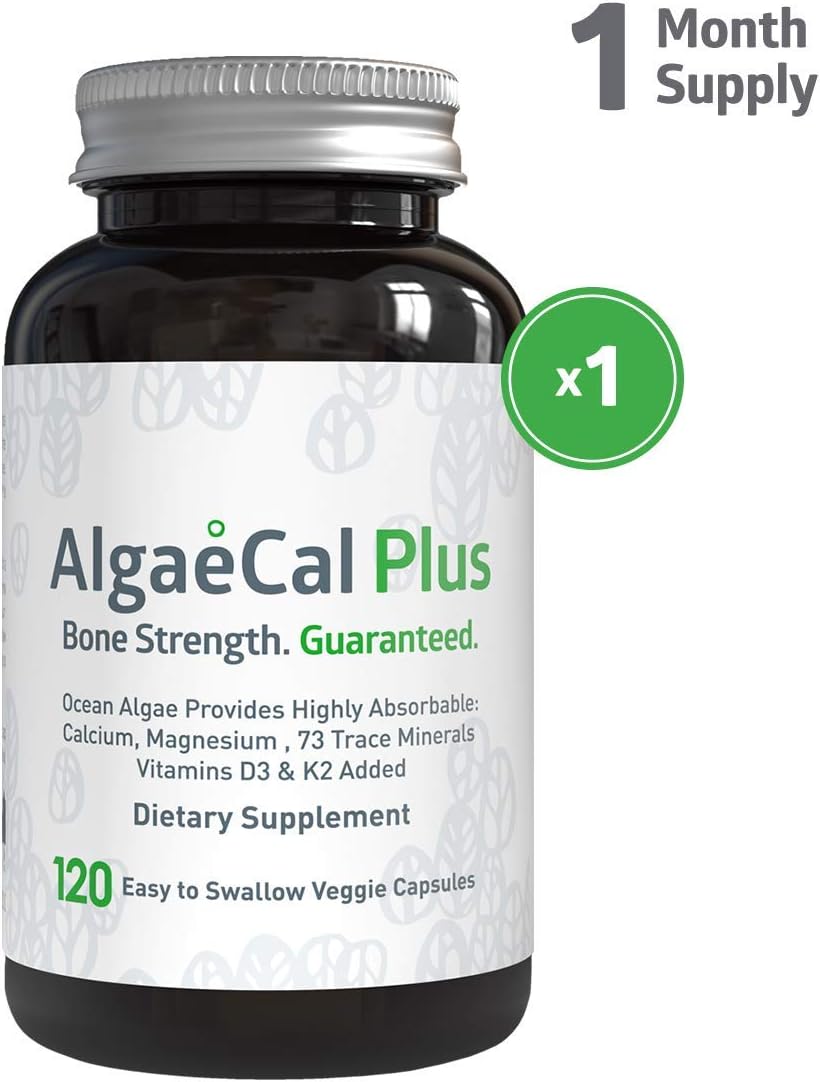 footnote 3 Too much calcium can cause constipation. Too much vitamin D can cause nausea and vomiting, constipation, and weakness.
footnote 3 Too much calcium can cause constipation. Too much vitamin D can cause nausea and vomiting, constipation, and weakness.
Getting too much vitamin D increases the amount of calcium in your blood. If this happens, you can become confused and have an irregular heart rhythm.
Calcium and vitamin D may interact with other medicines. A drug interaction happens when a medicine you take changes how another medicine works. One medicine may make another one less effective, or the combination of the medicines may cause a side effect you don’t expect. Some drug interactions are dangerous.
Before you start taking calcium and/or vitamin D, tell your doctor about all of the medicines you take, including over-the-counter drugs, herbs, and pills. Also tell your doctor about all of your current medical problems.
All About Calcium Supplements – Brigham and Women’s Hospital
Anne Chiavacci, RD, MS, MA Brigham and Women’s Hospital
Previously published on Intelihealth. com
com
Calcium is well known for its role in building and maintaining strong bones and teeth. It also functions in blood clotting, nerve conduction and muscle contraction. There is preliminary evidence that calcium supplements may decrease blood pressure, colon cancer risk, and symptoms of PMS.
It is best to try to meet calcium needs with food sources. For those who find it difficult, calcium supplements are helpful, but not all supplements are equal. The following are some of the most common questions nutritionists are asked about calcium supplementation, and our answers.
How much calcium do I need?
How much calcium you need depends on your age and whether you are pregnant or breast feeding.
| Group | Milligrams Per Day |
| 1 – 3 years | 500 mg |
| 4 – 8 years | 800 mg |
| 9 – 18 years | 1,300 mg |
| 19 – 50 years | 1,000 mg |
| 51+ years | 1,200 mg |
| Pregnancy and breast feeding | 1,000 – 3,000 mg |
Which foods contain calcium?
Calcium can be found in many foods, not only in dairy products.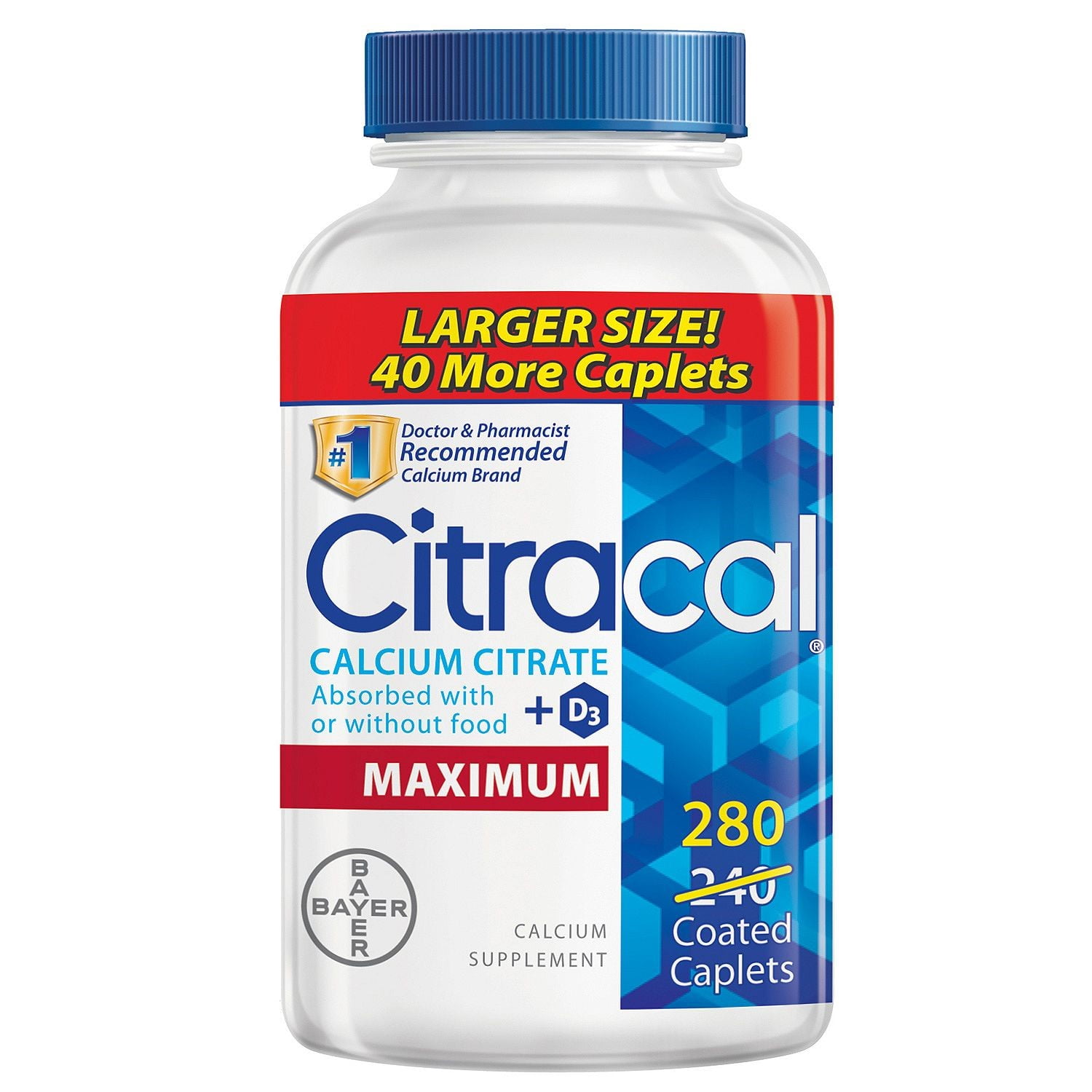
| Dairy Foods | |
| Yogurt (1 cup) | 350 mg |
| Milk (1 cup) | 300 mg |
| Cheddar cheese (1 oz.) | 204 mg |
| Ricotta cheese, part skim (1/4 cup) | 169 mg |
| Cottage cheese (1 cup) | 150 mg |
| Nondairy Foods | |
| Whole Grain Total cereal (3/4 cup) | 1000 mg |
| Pink salmon with bones, sardines (3 oz., cooked) | 181 mg |
| Black beans (1 cup) | 103 mg |
| Broccoli (1 cup, cooked) | 150 mg |
| Almonds (1 tbsp.) | 50 mg |
| Soy Products | |
| Soy yogurt with calcium (3/4 cup) | 300 mg |
| Soy milk enriched with calcium (1 cup) | 300 mg |
| Tofu, firm or extra firm (1/4 cup) | 250 mg |
| Soy nuts, roasted/salted (1/2 cup) | 103 mg |
How do I choose a calcium supplement?
Calcium carbonate and calcium citrate are the optimal forms of supplement.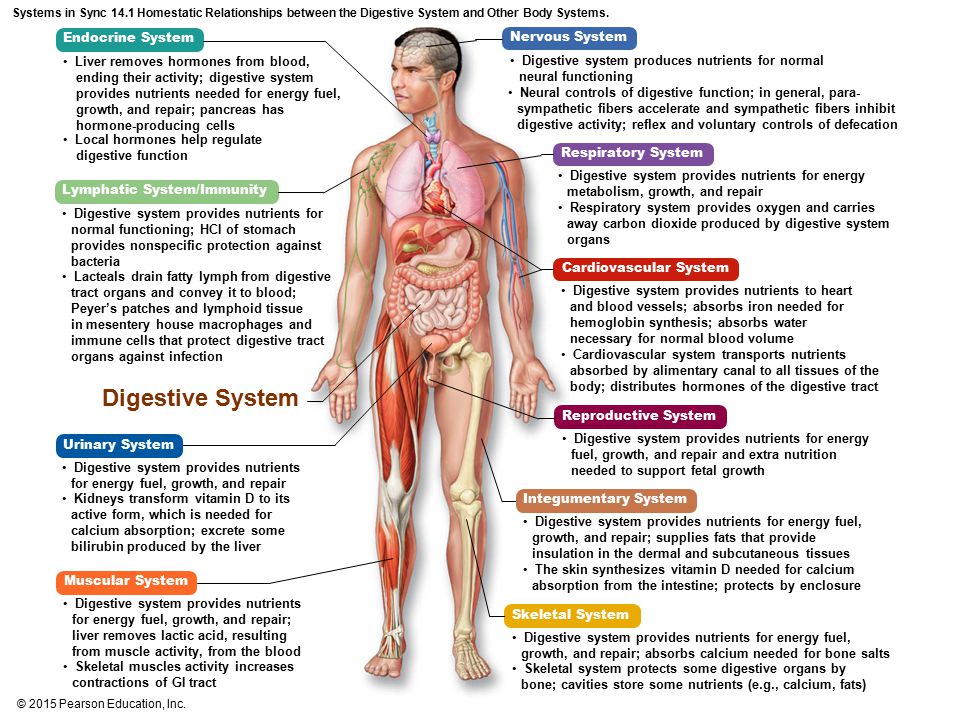
- Calcium carbonate supplements
- Viactiv Soft Calcium Chews with vitamins D & K
- Tums 500
- Caltrate 600
- GNC Calcium Complete (400 mg)
- Os-Cal 500
- Calcium citrate supplements
- Citracal
- Citracal with vitamin D (315 mg)
- TwinLab Calcium Citrate Caps (300 mg)
- Some calcium-fortified orange juice (but not all)
- GNC Calcimate Plus 800 (calcium citrate malate)
- Solgar Calcium Citrate (250 mg)
- Citracal Ultradense Calcium Citrate Tablets (200 mg)
Calcium carbonate should be taken with meals because it requires stomach acid to dissolve and absorb. Calcium carbonate has the most calcium per pill (40 percent), therefore fewer pills are needed. Some find calcium carbonate constipating.
Calcium citrate is well absorbed on an empty stomach and does not constipate. The downside is that it has less calcium per pill (20 percent). On the positive side, calcium citrate is less dependent on stomach acid for absorption. Older people often have decreased stomach acid, so the citrate form may be a better choice than calcium carbonate.
On the positive side, calcium citrate is less dependent on stomach acid for absorption. Older people often have decreased stomach acid, so the citrate form may be a better choice than calcium carbonate.
Avoid supplements made of dolomite, oyster shell and bone meal which may contain metals and lead. Calcium phosphate, calcium lactate and calcium gluconate are not recommended because they have very small amounts of calcium.
Don’t be fooled by ads for coral calcium promoting it as a cure for around 200 diseases including heart disease, cancer and diabetes. Coral calcium is merely calcium carbonate. In June 2003, the U.S. Federal Trade Commission charged marketers with making false claims about the product’s health benefits.
What is the difference between total calcium and elemental calcium?
The amount of elemental calcium is the number to use. During digestion, the elemental calcium is released from the compound (carbonate, citrate) and becomes available for absorption. Calcium carbonate provides 40 percent elemental calcium; the other 60 percent is the carbonate ingredient. Therefore, 600 milligrams (mg) of calcium carbonate provides 240 mg elemental calcium. Calcium citrate is 20 percent elemental calcium; 600 mg of calcium citrate provides 120 mg elemental calcium. The number that is part of the brandname (such as Caltrate 600, Os-Cal 500 and TUMS 500 Extra Strength) usually indicates the amount of elemental calcium in each tablet or pill. But you should read the label to be certain.
Calcium carbonate provides 40 percent elemental calcium; the other 60 percent is the carbonate ingredient. Therefore, 600 milligrams (mg) of calcium carbonate provides 240 mg elemental calcium. Calcium citrate is 20 percent elemental calcium; 600 mg of calcium citrate provides 120 mg elemental calcium. The number that is part of the brandname (such as Caltrate 600, Os-Cal 500 and TUMS 500 Extra Strength) usually indicates the amount of elemental calcium in each tablet or pill. But you should read the label to be certain.
A USP (United States Pharmacopeia) symbol on the label means that the calcium supplement is free of lead and other metals. It also meets standards for quantity of elemental calcium in the tablet and how well it dissolves. The application for this symbol is voluntary, so a product may be acceptable even if it does not display this symbol. Test your supplement by putting it in a glass of clear vinegar. Stir occasionally. If it dissolves within 30 minutes, it should do so in your stomach too!
What increases or decreases calcium absorption?
Spread out your calcium from foods and supplements throughout the day.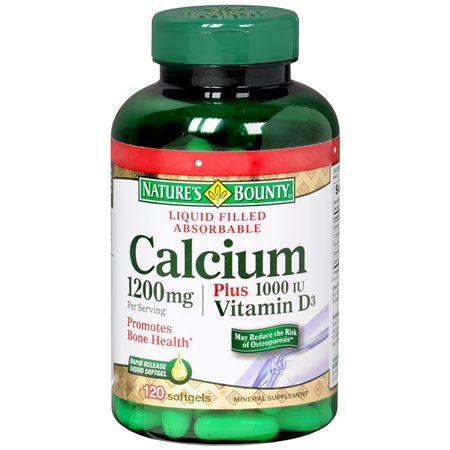 For best absorption, take no more than 500 mg calcium at one time. (To avoid calcium toxicity, do not exceed 2,500 mg of elemental calcium per day.)
For best absorption, take no more than 500 mg calcium at one time. (To avoid calcium toxicity, do not exceed 2,500 mg of elemental calcium per day.)
Vitamin D enhances calcium absorption, so make sure to get 400 to 800 international units (IU) of vitamin D per day.
Oxalic acid found in dark leafy greens, rhubarb, soy and cocoa decreases the absorption of calcium in these foods. Foods high in insoluble fiber (such as whole grains and wheat bran) also can decrease the absorption of calcium taken at the same time.
Phosphoric acid in dark sodas can interfere with your body’s absorption of calcium. Prolonged use of magnesium-containing laxatives compromises calcium absorption as well.
Here are some other factors to consider:
- Caffeine increases calcium lost in the urine. Limit yourself to one to two cups of caffeinated coffee or soda per day.
- Excess sodium in the diet also increases calcium excretion. Every 500 mg of sodium over 2,400 mg per day causes the body to excrete 10 mg of calcium.

- Taking calcium supplements with iron or zinc compromises the absorption of these minerals.
- Calcium decreases the absorption of certain drugs (bisphosphonates, thyroid, some antibiotics). Other drugs can increase calcium needs (corticosteroids, some diuretics).
The Bottom Line
Calcium is needed for healthy bones, teeth nails and muscle tissue. It also assists in blood clotting and heart and nerve functions. Calcium can be obtained through diet (food sources) or through supplements. It is important to review your medications with your doctor, pharmacist, or nutritionist before starting a calcium supplement.
Calcium, Nutrition and Bone Health
We’ve all heard how calcium is important for bone health and this is true. But what exactly does calcium do for the body and where or how do you get it? What measures can we take to maintain proper bone health, especially as we age? Calcium helps our muscles, nerves, and cells function well. We can consume calcium through nutritious food and supplements.
We can consume calcium through nutritious food and supplements.
Calcium’s Role in the Body
Calcium is a mineral. It’s a vital chemical element our bodies need in order to build and maintain strong bones. Calcium is also required for healthy communication between the brain and other parts of the body.
Calcium affects muscles by regulating contractions. This includes regulating the heart beating because the heart is a muscle that pumps blood. Calcium is released when a nerve stimulates a muscle. Calcium also plays a role in the complex process of blood coagulation (blood clotting).
How do We Get Calcium?
The body doesn’t naturally produce calcium, nor does it absorb it directly. Vitamin D helps the body absorb calcium and is added to many calcium supplements. This encourages protein synthesis in the body, making calcium absorption possible.
The best way for us to obtain calcium is through foods rich in nutrients that have calcium.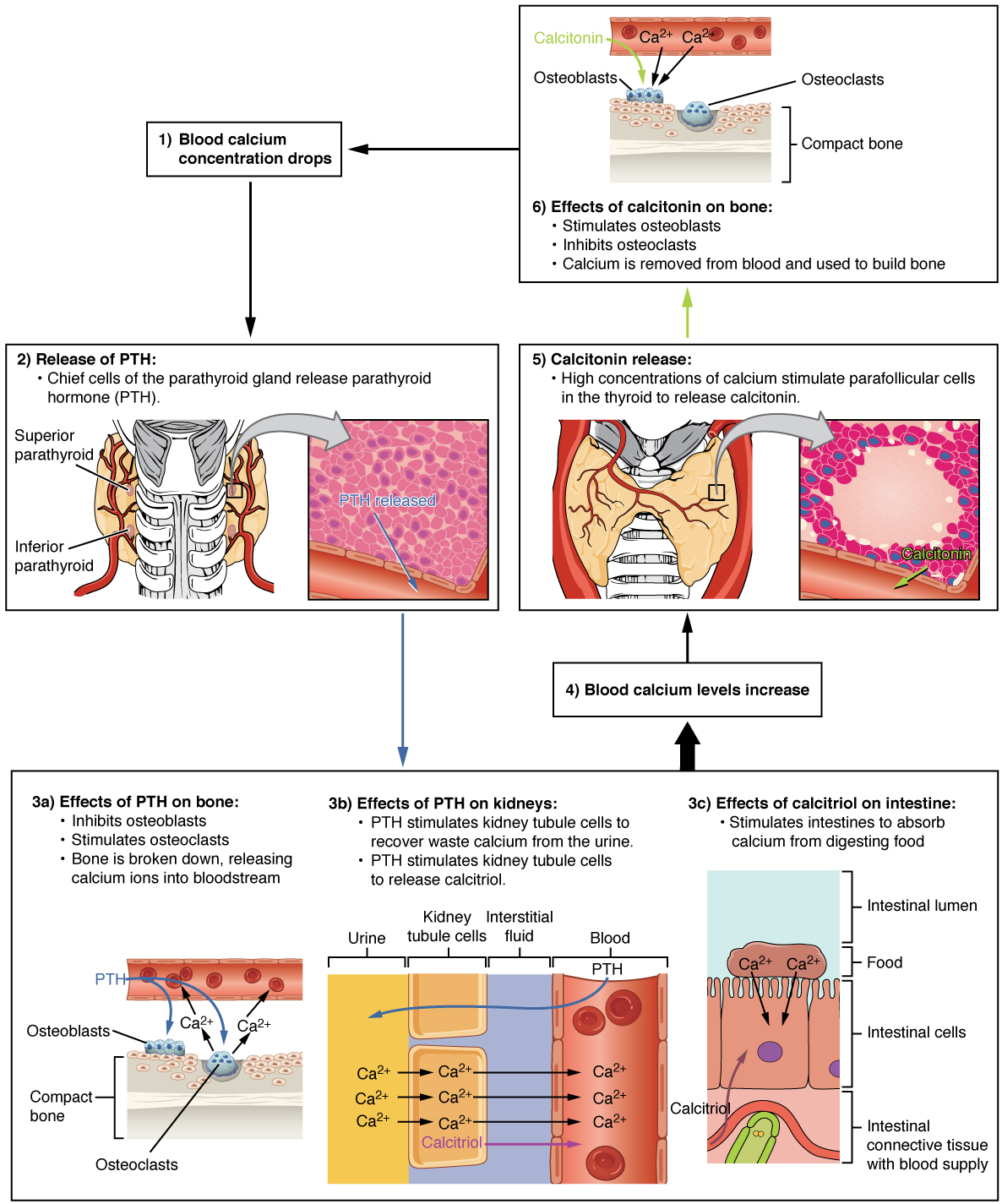 Some foods are more calcium-concentrated than others. Here are great options for food sources with absorbable calcium to eat.
Some foods are more calcium-concentrated than others. Here are great options for food sources with absorbable calcium to eat.
- Dairy products: Foods like yogurt, milk, cheese and ice cream
- Salmon and sardines: Preferably canned and with the bone
- Nuts and seeds: Pistachio, sesame, chia, almonds, and hazelnuts
- Beans and lentils: White beans
- Dark leafy greens: Dark lettuce, spinach, broccoli, kale and collards
- Soy products: Tofu and edamame
Your food diet, rather than supplements, is the best source for getting calcium – mainly because it has varying amounts of absorbable calcium. Dairy products have the highest concentration per serving of highly absorbable calcium. Most people absorb a small percentage (about 15% to 20%) of the calcium from their diet. Vitamin D helps the gut absorb more calcium. Eating foods high in calcium, paired with vitamin D, is strongly recommended for bone health.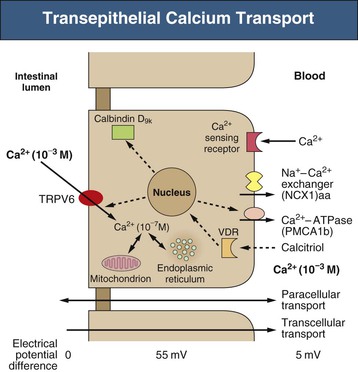
How Does the Body Use Calcium for Bone Health?
Your bones can weaken and or may not grow properly if you do not get enough calcium in your diet, or if your body does not absorb enough calcium. While Vitamin D isn’t as prevalent in many as many foods as calcium, your skin absorbs sunlight and then produces vitamin D and it’s stored in body fat for later use.
Calcium in the human body is found in the bones and teeth. It’s essential for the development, growth, and maintenance of bone. From childhood, calcium strengthens our bones until the age range of 20-25 when bone density is at its highest. After this age range, bone density declines but calcium continues to help maintain bones and slow down bone density loss. This is a natural part of the aging process.
Osteoporosis sets in with age, mostly due to how little bone mass was attained during youth.
Symptoms of weakened bones or Osteoporosis:
- Back pain, caused by a fractured or collapsed vertebra
- Loss of height over time
- A stooped posture
- Bones that breaks more easily than expected
People who don’t consume enough calcium before the age range of 20-25 have a much higher risk of developing osteoporosis later in life. Why? Because calcium is drawn from the bones as a replacement when bone density loss begins.
Why? Because calcium is drawn from the bones as a replacement when bone density loss begins.
Adequate calcium is key to reducing the risk of osteoporosis. Your bones are a living organ. Bones are constantly being remodeled with old bone being resorbed and new bone being formed. Did you know it takes about 10 years for all the bone in your body to be renewed? This is why getting calcium is important for adults as we age, just as it is important for children.
Calcium is a significant mineral our bodies need. The best way to obtain calcium is through nutritional foods high in concentration of it. Vitamin D helps our bodies absorb calcium and allow our bones to store calcium for later bone health maintenance.
Calcium and bones: MedlinePlus Medical Encyclopedia
The mineral calcium helps your muscles, nerves, and cells work normally.
Your body also needs calcium (as well as phosphorus) to make healthy bones. Bones are the main storage site of calcium in the body.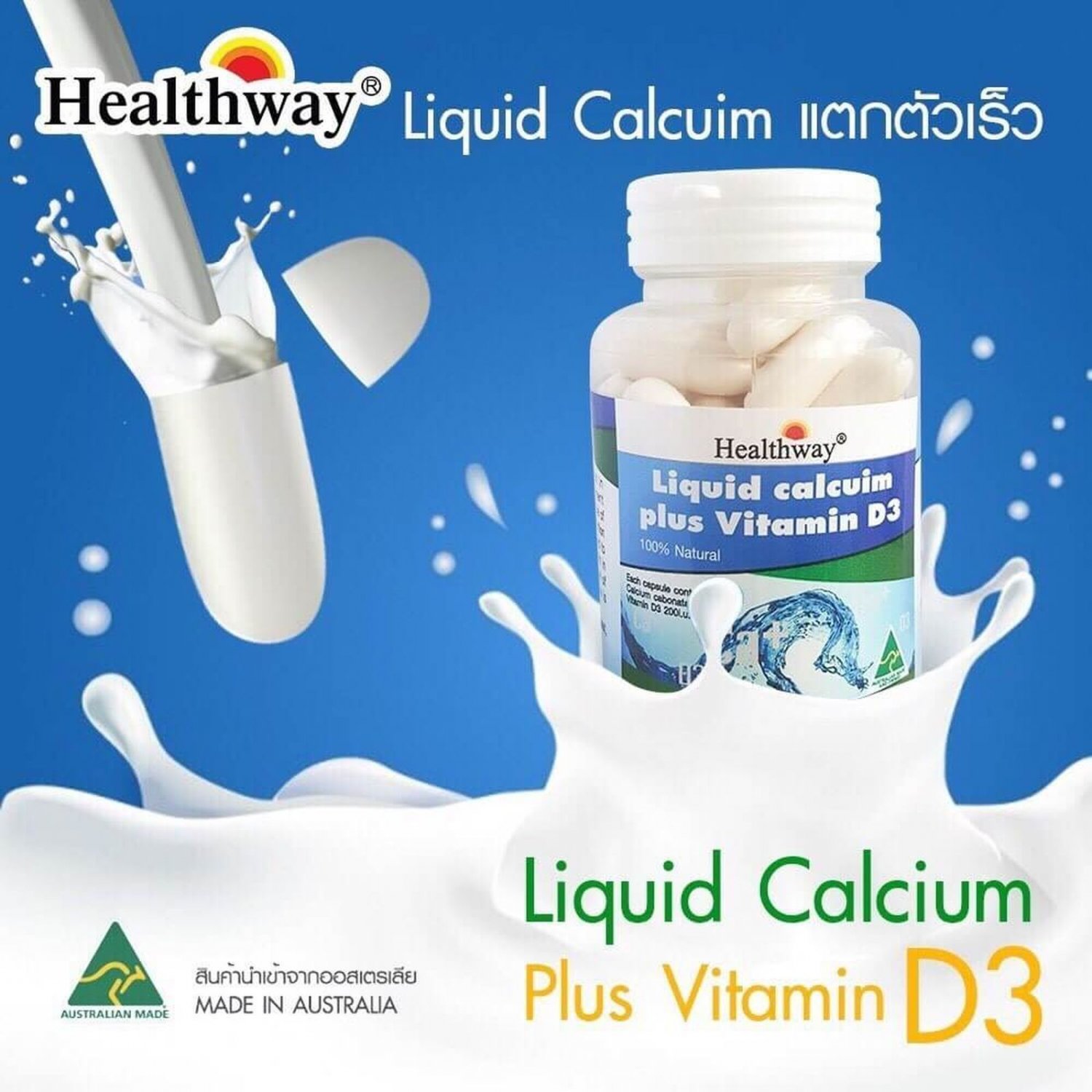
Your body cannot make calcium. The body only gets the calcium it needs through the food you eat, or from supplements. If you do not get enough calcium in your diet, or if your body does not absorb enough calcium, your bones can get weak or will not grow properly.
Your skeleton (bones) are a living organ. Bones are constantly being remodeled with old bone being resorbed and new bone being formed. It takes about 10 years for all the bone in your body to be renewed. That is why paying attention to bone health is important in adults and not just in growing children.
Bone density refers to how much calcium and other minerals are present in a section of your bone. Bone density is highest between ages 25 and 35. It goes down as you get older. This can result in brittle, fragile bones that can break easily, even without a fall or other injury.
The digestive system is normally very bad at absorbing calcium. Most people absorb only 15% to 20% of the calcium they eat in their diet. Vitamin D is the hormone that helps the gut absorb more calcium.
Vitamin D is the hormone that helps the gut absorb more calcium.
Many older adults have common risks that make bone health worse. Calcium intake in the diet (milk, cheese, yogurt) is low. Vitamin D levels are low and gut calcium absorption is low. In many adults, hormonal signals have to take some calcium out of the bones every day to keep blood calcium levels normal. This contributes to bone loss.
Because of this, as you age, your body still needs calcium to keep your bones dense and strong. Most experts recommend at least 1,200 milligrams of calcium and 800 to 1,000 international units of vitamin D a day. Your health care provider may recommend a supplement to give you the calcium and vitamin D you need.
Some recommendations call for much higher doses of vitamin D, but many experts feel that high doses of vitamin D are not safe for everyone. In addition, very high amounts calcium in your diet can lead to health problems such as constipation, kidney stones, and kidney damage.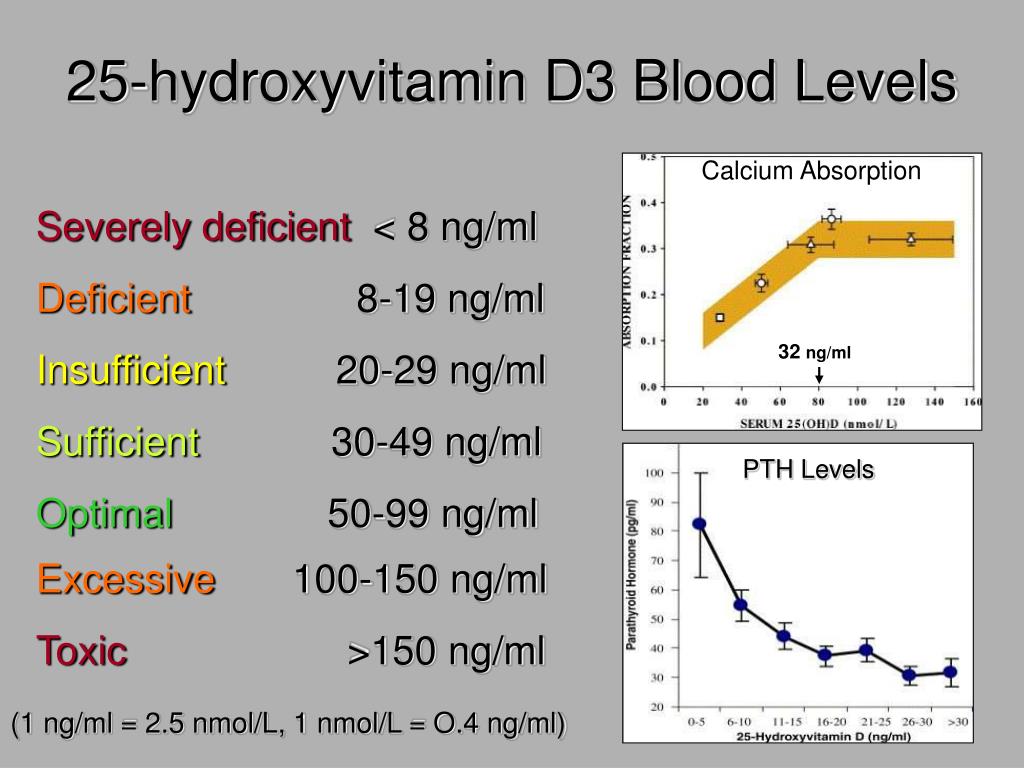 If you are concerned about bone health, be sure to discuss with your provider whether supplements of calcium and Vitamin D are a good choice for you.
If you are concerned about bone health, be sure to discuss with your provider whether supplements of calcium and Vitamin D are a good choice for you.
People who have gut-related diseases (inflammatory bowel disease, gastric bypass surgery), parathyroid gland disease, or are taking certain medications may need different recommendations for calcium and vitamin D supplementation. Talk to your provider if you are unsure about how much calcium and vitamin D to take.
Follow a diet that provides the proper amount of calcium, vitamin D, and protein. These nutrients will not completely stop bone loss, but they will help ensure that your body has the materials it needs to build bones. Remaining fit and active can also protect bones and keep them stronger. Avoiding smoking also protects bones and keeps them stronger.
High-calcium foods include:
- Milk
- Cheese
- Ice cream
- Leafy green vegetables, such as spinach and collard greens
- Salmon
- Sardines (with the bones)
- Tofu
- Yogurt
Vitamins and Minerals | Food Sources for Calcium
The Recommended Dietary Allowances for calcium vary according to age. Most people consume only about half of what they need.
Most people consume only about half of what they need.
Age of 19-50 years: 1000 mg per day
Over 50 years: 1200 mg per day
The calcium in dairy products is absorbed most efficiently, but if you cannot tolerate dairy products there are now foods fortified with calcium such as orange juice and soy “milk”. Some vegetables, beans and nuts are also good sources of calcium but you need to eat lots of them in order to get the 300 mg calcium that is in 1 cup milk (see below). In order for the body to absorb the calcium in food it needs a hormone produced by Vitamin D. Dairy foods naturally contain Vitamin D. If you depend on non-dairy foods for calcium, be sure you are taking a one-a-day type multiple vitamin plus minerals in order to get adequate vitamin D. Your skin also makes Vitamin D when it is exposed to the sun. We need about 15 minutes several times per week in order to get enough Vitamin D. During winter months in Michigan we cannot rely on sun for Vitamin D so it is important to take a multiple vitamin daily. Some cereals are fortified with calcium in large amounts. If you eat these regularly, be sure not to overdo calcium supplementation.
Some cereals are fortified with calcium in large amounts. If you eat these regularly, be sure not to overdo calcium supplementation.
Good Food Sources Of Calcium
| |
Total cereals, one serving | 1000 |
8 ounces plain yogurt | 400-450 |
1 ounce Parmesan cheese | 390 |
3 ounces sardines with bones | 325 |
8 ounces fruit-flavored yogurt | 315 |
1 cup skim milk | 302 |
1 cup orange juice with calcium | 300 |
1 cup fortified soymilk | 200-300 |
1 cup low-fat chocolate milk | 288 |
1 ounce Swiss cheese | 272 |
1 ounce part-skim mozzarella | 207 |
3 ounces salmon with bone and liquid | 181 |
1/2 cup collard greens | 113-178 |
2 tbsp sesame seeds | 176 |
2 pancakes, made with milk | 164 |
1/2 cup cup pudding made with skim milk | 150-160 |
1 cup tomato soup made with milk | 159 |
1 ounce blue cheese | 150 |
1 ounce feta cheese | 140 |
1/2 cup green soybeans | 130 |
1 ounce low-fat cheese | 118 |
1 slice cheese pizza | 117 |
1/2 cup vanilla ice cream | 113 |
1 packet instant oatmeal | 105 |
1/2 cup black-eyed peas | 105 |
1/2 cup soft serve yogurt | 103 |
1 cup Cheerios | 100 |
1/2 cup All-Bran | 99 |
1/2 cup turnip greens | 99 |
1/2 cup soybeans | 88 |
3 figs | 81 |
1/2 cup bok choy (Chinese cabbage) | 79 |
1/2 cup cottage cheese | 78 |
1 cup bean soup | 78 |
1/2 cup baked beans | 77 |
1 ounce almonds (24) | 70 |
|
|
SOURCE: USDA Nutrient database for standard reference. Nutrient Data Laboratory
Ways to Add Calcium to Your Diet
Ten Tips For Adding Calcium To Your Diet
- Have a low-fat yogurt for a snack.
- Add grated low-fat or soy cheese to roll-up sandwiches or salads.
- Use marinated tofu in stir-frys.
- Sprinkle some almonds on your cereal or salad.
- Have main dishes based on beans rather than animal protein.
- Try cooked turnip or collard greens as a “new” vegetable.
- Have low-fat pudding for desert.
- Use calcium-fortified orange juice for breakfast.
- Order low-fat milk at restaurants instead of pop.
- Vanilla soymilk is delicious on oatmeal.
Calcium Supplements
What type should I take?
Nutritionists prefer that we get our calcium from food, but if you are not eating enough calcium rich foods you need to take a supplement. Calcium in supplements comes in various forms. Calcium carbonate has the highest concentration of calcium by weight (40 percent) so you won’t need to take as many pills as you would if you use calcium citrate, which is 21 percent calcium or calcium lactate, which is 14 percent calcium. Calcium carbonate is the type of calcium found in popular antacids such as TUMS or ROLAIDS. It is generally less expensive than calcium citrate. Some people however tolerate calcium citrate better. You want to avoid calcium supplements containing bonemeal, as those can contain lead, a very toxic substance. Look for a USP designation on your calcium supplement. This indicates the supplement will dissolve and be absorbed adequately.
I can’t find plain calcium, all the supplements have other things added
Most calcium supplements usually have added vitamin D, which is good, because that helps your body absorb calcium. Although magnesium or other minerals are often added to calcium supplements these are NOT recommended because mineral supplements containing magnesium, iron and zinc actually interfere with calcium absorption. Antacids such as TUMS
®
or ROLAIDS
®
are an inexpensive source of calcium carbonate with nothing else added. Make sure if you use these that you take an all-purpose multiple vitamin/mineral supplement in order to get the vitamin D. However, DO NOT TAKE your multiple vitamin/mineral supplement at the same time as you take your calcium supplement because the minerals in the vitamin will compete with calcium for absorption.
How much should I take?
Experts recommend that calcium supplements contain no more than 500 – 600 mg of calcium per serving. That is the most that the body can absorb at one time. The upper limit for calcium from food PLUS supplementation is 2500 mg per day. Calcium toxicity can occur in people taking mega doses of calcium supplements, causing headache, irritability and kidney problems. It is a good idea to have a dietitian evaluate your diet for calcium and then advise you on how much calcium to take from supplements. More is not better when it comes to calcium supplements.
When should I take my calcium?
In general it is best to take calcium supplements between meals or at bedtime because several dietary factors can decrease calcium absorption from supplements. If you are over the age of 70 and using a calcium carbonate supplement, then you might want to take it after you eat. Calcium needs an acidic environment in order to be absorbed, and as we get older the acidity in our intestines decreases. Calcium citrate supplements already are acidic so it is not necessary to take them with meals. Some people get indigestion and gas from calcium supplements, especially calcium carbonate. Taking it at bedtime helps people tolerate the supplement better.
90,000 Related article: How Magnesium accompanies Calcium
Calcium is necessary for our body, and not only in childhood and during the period of active growth, but also throughout life. Healthy strong bones, beautiful hair, good skin are relevant for everyone. It would seem that it could be simpler – there are a lot of calcium preparations in the pharmacy. But in order for calcium to be properly absorbed by our body, additional conditions are needed!
The lonely arrival of calcium to our bones does not mean anything yet.There are several vital nutrients that help the body absorb calcium and do everything so that we can use it, so that our body turns it on and does not store it in the wrong places.
Magnesium helps the body absorb and store calcium. Magnesium works very closely with calcium in the process of building and maintaining bones, preventing and treating osteoporosis. Magnesium also activates vitamin D, which works to absorb calcium.If the body stops supplying magnesium, or the magnesium “pantry” becomes scarce, it is vital to include enough magnesium in the diet.
Magnesium tips:
- Magnesium is abundant in nuts, seeds, grains, marine animals, legumes, tofu and vegetables
- Chard and spinach are excellent sources of magnesium. Put some spinach in salad and chard can be added to soup
- Don’t neglect pumpkin, herbs, broccoli, cucumbers, green lentils and celery when making summer smoothies
- Replace some refined flour with whole flour for a richer taste.
- Oh, seeds! Pumpkin, sesame, linseed, sunflower. How to use? Add to salads, soups and other dishes. Teach your loved ones – it’s just
- Pay attention to the snacks. Almonds and cashews are very high in magnesium. Packages with such a snack can be taken with you for a walk
- Reduce your sugar and alcohol intake, as they wash out the magnesium badly.
P. S. We are not talking about how to take medications or supplements.This is not our specialty. We focus on correct and tasty food, which can and does affect our active life, mood and success.
P. P. S. Do you like granola? Granola “Roman Holiday” is a wonderful and delicious source of magnesium, omega-3 fatty acids, manganese and selenium – all these components are necessary for the successful absorption of calcium by our body.
For calcium to be useful »Pharmvestnik
Calcium preparations can be used to prevent osteoporosis in elderly people, but only if they are prescribed by a doctor, i.e.because in some disorders and chronic diseases (for example, the risk of hypercalcemia), additional calcium intake may be contraindicated. In addition, the effectiveness of calcium supplements as an independent method of preventing osteoporosis and its complications is not very high – the risk of fractures is reduced by only 10%. Therefore, today calcium preparations are used for the prevention of osteoporosis only in combination: with active forms of vitamin D, physical activity, diet, etc. In many situations, the problem of calcium deficiency in the body has to be solved not by taking additional calcium-containing drugs, but by treating chronic diseases of the gastrointestinal tract, in which the absorption of calcium from food is impaired, or by eliminating the consequences of hormonal disruption, for example, in perimenopausal women and in patients with thyroid diseases.
Calcium is well absorbed only from food.
In a healthy person, without chronic diseases of the gastrointestinal tract, in which digestion is disturbed, calcium is absorbed well both from food and from drugs or dietary supplements. But it can be more difficult to control its intake through food. The calcium content in foods can vary, and one cannot be sure that when eating a certain amount of a particular food, a person will receive the required amount of this mineral.In addition, the absorption of calcium from food is sharply reduced when eating fatty foods, a large amount of light carbohydrates, foods rich in acids (oxalic, phytic) and even plant fiber. It is believed that the absorption of calcium from food does not exceed 20-25%. If calcium is used in a balanced form for better absorption of complex preparations, the result is more controlled and predictable.
Calcium preparations are needed only for the elderly and pregnant women.
In pregnant and lactating women, the body’s need for calcium really increases sharply, and it is extremely difficult to compensate for it only with the help of a diet.In older people, calcium deficiency is most often associated with chronic gastrointestinal diseases, hormonal changes that affect bone mineral density, and age-related decrease in the ability to absorb calcium from food. But these are far from all groups of patients for whom additional intake of calcium supplements is recommended. Calcium is often prescribed to children in the first year of life for the prevention of rickets. Also, its use is recommended for women in menopause, patients taking glucocorticosteroids for a long time.Indications for the appointment of calcium can be long-term non-healing fractures, the need to follow a low-protein diet, allergic dermatitis, etc.
Only those preparations that contain organic calcium should be taken.
The bioavailability of different calcium preparations really differs, but there is no consensus on whether organic salts (lactate, gluconate, citrate) can be considered more effective than inorganic (i.e. carbonate) salts today. This is due to the fact that the state of the gastrointestinal tract has a great influence on the bioavailability of calcium.In a person with normal or increased gastric secretion and pH levels, calcium carbonate can be absorbed as well, and sometimes better, than its organic forms. Especially when taking calcium carbonate during or immediately after meals. At the same time, some organic forms of calcium – gluconate and lactate, have high bioavailability regardless of food intake and have proven themselves well when administered to patients with impaired renal function and perimenopausal women. Calcium in the form of citrate is well absorbed regardless of the acidity level of gastric juice and the activity of the gallbladder, so it can be used in the elderly and patients with gastrointestinal diseases.
Amino acid chelates are considered to be one of the most modern dosage forms of calcium today. These are complex compounds in which each particle of calcium is surrounded by amino acids, due to which it has a high bioavailability (over 90%) when taken orally. Calcium chelates can be recommended in cases where the patient is poorly absorbed by conventional calcium preparations or it is necessary to replenish the deficiency of this mineral in the body as soon as possible.
Calcium should only be taken together with vitamin D.
Vitamin D plays a very important role in the absorption of calcium in the intestine (from food and drugs), the metabolism of this mineral in the body and the maintenance of calcium in the bone tissue. But with regular intake of large doses of vitamin D, hypervitaminosis and dangerous intoxication can develop very quickly, because this vitamin is fat-soluble and is able to accumulate in the body. Hypervitaminosis D can lead to excessive intake of calcium into the body, followed by the deposition of its salts in the walls of blood vessels, tissues of internal organs, as well as to impaired renal function and damage to nerve cells.Therefore, calcium together with vitamin D can be taken either in the form of fixed combinations (strictly following the instructions), or by combining the intake of calcium and vitamin D preparations in the form of cholecalciferol – in the recommended age-specific dosage.
Calcium is poorly absorbed in the elderly, so higher doses are needed.
In old age, the absorption of calcium from food and drugs does decrease, but it is impossible to solve this problem simply by increasing the dose of additional calcium.It is necessary to look for the reason for the low absorption of calcium. These can be diseases of the gastrointestinal tract, which are accompanied by indigestion, thyroid pathology, hormonal problems, especially in women. A very common cause of poor calcium absorption in old age is vitamin D deficiency, the formation of which in the skin decreases with age. And only by eliminating all the causes that have arisen, you can solve the problem of calcium deficiency. Taking too high doses of calcium in such a situation is not only useless, but can also become dangerous, since it can provoke the development of complications – from the development of chronic constipation to an increased risk of cardiovascular complications.
Calcium should be taken only in the form of monopreparations, together with other minerals, it is not absorbed.
Some minerals can partially reduce or slow down the absorption of calcium in the intestine, others – increase its bioavailability. Simultaneous administration with preparations containing salts of iron, zinc, manganese, aluminum can negatively affect the absorption of calcium. To improve the absorption of calcium, you can use combination preparations in which this mineral is supplemented with vitamin D and K, trace elements chromium and selenium.But it must be borne in mind that in cases where prevention or treatment of an already existing calcium deficiency is needed, attention should be paid not only to the composition, but also to the dosage of the selected drug. Some vitamin and mineral complexes may contain too low a dose of calcium, which is not enough to meet the daily needs of the body.
With osteoporosis, it is useless to take calcium, only vitamin D helps.
In case of osteoporosis that has already arisen, the intake of calcium supplements as a method of treatment no longer has an independent significance.But calcium is necessarily prescribed as an adjunct in the complex therapy of this disease. Additional calcium intake is necessary in cases where the patient is receiving drugs that prevent the destruction of bone tissue (bisphosphonates, calcitonins, etc.). Also, calcium is prescribed to prevent the progressive decrease in bone mineral density, which may occur during treatment. Calcium is often prescribed as an adjunct to hormone replacement therapy in women and in patients at very high risk of fractures or pre-existing bone injuries.And the most preferable is the use of combined products, which, in addition to calcium salts, include vitamin D.
How to get your own rate of calcium and help the body to assimilate it correctly?
Calcium is found in many foods. But simply eating them to provide calcium is not enough. This macronutrient is pretty moody. It is difficult to digest, requiring special conditions for this. If we do them, we get strong bones and healthy teeth and beautiful hair.
Calcium is not at all alone. In order for it to be assimilated in the body, it needs companions. Magnesium and phosphorus are best suited. If there are enough of these substances (which, by the way, is rare), then calcium will be assimilated. But if magnesium, for example, is in short supply, then calcium, on the contrary, will be intensively excreted from the body. In order to prevent such a development of the plot, it is worth eating cottage cheese more often. It contains all the participants in this game: calcium, phosphorus, and magnesium. Alternatively, eggs, fresh herbs, and certain types of fish are good options.
Legumes are also a good option for getting your calcium requirement. Pea or chickpea soups, beans and tofu contain calcium, magnesium and phosphorus in the right proportions. You can also get additional magnesium from whole grain bread or cocoa.
Product selection
Calcium is found in milk and milk products in the form of lactate. It is easy to digest and almost completely fulfills its purpose. Slightly worse, by 80 percent, citrate and similar calcium compounds from broccoli, collard greens (except spinach), almonds, turnips and fish are absorbed.But sesame is full of easily digestible calcium. Having eaten 100 g, you can supply your body with a daily norm.
But this does not mean that from now on sesame must be eaten with spoons. You can add it to leafy greens and broccoli salads with cottage cheese, or drink a tablespoon of sesame oil in the morning on an empty stomach. And eat figs and almonds as a dessert.
Chia seeds are also rich in calcium. 100 grams contains about 600 mg of an important macronutrient. Chia seeds can be conveniently added to smoothies, desserts, or yogurt.
By the way, calcium is also found in large quantities in plant milk, especially oat milk. There is 120 mg of calcium per 100 ml. It can be added to hot and cold drinks, used as a smoothie base, or cooked into porridge.
Prevent Waste
Choosing the right calcium-rich foods is only half the battle. At the same time, it is better to exclude foods that contribute to its loss from the diet. The macronutrient is washed out under the influence of caffeine, salt and hydrogenated fats.In this regard, it is better to avoid eating margarine, creamy spreads and canned sauces. As for coffee, you can, of course, drink it, but no more than 3 cups a day. If you cannot meet this amount, then at least compensate for the losses with additional milk.
Beets, spinach, sorrel and rhubarb, or rather the acids they contain, will interfere with the absorption of calcium. They should be consumed in moderation. But dried apricots, on the contrary, should be added to the diet.It contains potassium, which will prevent the loss of an important macronutrient.
Conductors for calcium
It is possible to increase the absorption of calcium. For example, if you use it together with vitamin D. It not only increases the absorption of the microelement by 30–40%, but also normalizes its balance with phosphorus. In addition, vitamin D is actively involved in calcium metabolism.
Highest vitamin D content in liver, eggs and seafood. Such as shrimp, lobster, crabs, herring, salmon, sardines and mackerel.But we get all such main amount thanks to ultraviolet rays. Therefore, on a sunny day, be sure to walk in the fresh air for at least a quarter of an hour.
Physical activity
Calcium will be absorbed much better if we have enough physical activity in our lives. If you run or walk, do exercises with a barbell or dumbbells, then the bone tissue will grow.
And you shouldn’t even sweat to a sweat. Because with sweat, the loss of calcium only increases.It is enough to lose 400-450 kcal during the lesson. Typically, a standard power set and thirty minutes of cardio will suffice for this. The sauna should not be overused. And if you still sweat, then make up for the loss with a glass of kefir or oat milk with the addition of chia seeds.
Supplements for sports and beyond
Even if you do not exercise professionally, take a look at Whey Protein Isolate. It contains not only essential amino acids, but also bioavailable calcium.
It is believed that after 25 years, 800 mg of calcium should be consumed per day. And after 50 and even more – 1200-1500 mg, as well as for pregnant and lactating women. In addition, American scientists also advise adding 100 mg of vitamin B6 and 400 mg of magnesium oxide to your daily diet. It improves mood and helps to flush excess water from the body.
Minimum stress
When we are nervous, our body produces the stress hormone cortisol. It negatively affects the absorption of calcium in the intestine and promotes its excretion in the urine.Therefore, the more stress we experience, the more calcium we lose.
Remember this and try to avoid unnecessary worries. Allow yourself to rest and eat well. And do not deprive yourself of the joys in the form of a piece of dark chocolate. It contains antioxidants, vitamins A, C, E, as well as selenium, magnesium, iron, potassium and calcium, of course.
How vitamin D and calcium work and why it is better to use them togetherThe doctor will determine what dose of this vitamin to prescribe – prophylactic or saturating.
In addition, according to recent studies, certain genes affect the assimilation of vitamin D, more precisely, the genes “supervise” the work of various enzymes involved in the assimilation of vitamin D. Thus, the DHCR7 gene regulates the work of the enzyme 7-dehydrocholesterol reductase, which is necessary for the synthesis the precursor of vitamin D. The CYP2R1 gene is responsible for liver enzymes involved in the metabolism of vitamin D.The GC gene regulates the activity of a protein that binds and transports this vitamin and its metabolites in the liver. Because of this complex system, it turns out that people under the same living conditions have different levels of vitamin D, which depends on genetic characteristics.
Vitamin D has a positive effect on the immune system, contributes to the maintenance of bone density and the prevention of osteoporosis.
Why calcium is useful
Calcium is involved in a variety of body processes:
- important for bone metabolism;
- maintains bone strength;
- helps the formation of melatonin;
- provides muscle contraction and nerve impulses.
For the prevention of calcium deficiency, fermented milk products should be consumed; products marked “fortified with calcium” are also acceptable. With a lack of calcium, the body “takes” it from the bones, and they become “leaky”, the risk of fractures increases and osteoporosis develops.
Where to look for calcium
Calcium and vitamin D are interconnected: milk and fermented milk products contain bioavailable calcium, but it is well absorbed only with a sufficient amount of vitamin D in the body.Only in commonwealth do these two elements reduce the risk of osteoporosis.
Calcium is found not only in dairy products, but also in nuts, nut milk, green vegetables (spinach, broccoli, etc.). The problem is that 100 g of hard cheese contains the same amount of calcium as 1 kg of broccoli and 15 kg of spinach. Therefore, it is easier to get the necessary element from fermented milk products or preparations as prescribed by a doctor.
How to strengthen bones and joints for a child and an adult
December 18, 2019
The musculoskeletal system of the human body is bones, muscles, joints, ligaments, tendons and cartilage.Strong bones and flexible joints allow you to feel good and lead an active lifestyle. This means that it is important to maintain their condition in an absolute norm, any violation of which is fraught with health problems.
The formation and condition of the skeletal system is controlled by various processes taking place inside the body, however, external factors such as nutrition and physical activity also affect. The issue of strengthening bones is of paramount importance, so everyone should have information about the amount of calcium and vitamin D in their body, since bones and joints need these elements.
Calcium – strength of joints and bones
Calcium is one of the five most essential minerals for humans. It participates in many important and complex processes of the body’s work, in particular, it is a building material for bones, is responsible for their strength and renewal. If its reserves are depleted, then the calcium contained in the bones begins to be consumed. The reasons for this may be an unbalanced diet, fasting, insufficient intake of calcium-rich foods, lack of vitamin D, various diseases (including the endocrine and digestive systems), pregnancy, stress, old or childhood, etc.Calcium deficiency is dangerous, as it leads to a number of serious consequences. Therefore, calcium control is included in the diagnosis of many diseases and helps to assess the state of health in general.
However, it is worth making a small reservation: for strong bones, the body needs not only calcium, but also substances that help to enhance its production, assimilation and beneficial properties. These are vitamin D, potassium, iron, phosphorus, magnesium.
Vitamin D
Vitamin D is another important element for bone health, as it promotes the absorption of calcium and phosphorus, influencing their levels in the body.It is synthesized in sunlight, so for the production of this vitamin, a person needs to be in the sun at least three times a week for 10-15 minutes a day. “Sunny” vitamin is needed by all people. Due to its lack, children may develop rickets, because it is necessary for the formation of the skeleton, and in adults, the bones become weaker, worried about pain, and there are risks of fractures. So it is always worth remembering which vitamin strengthens bones.
Daily calcium intake
| Group (gender, age) | Daily allowance, mg | ||
| Children from 1 year to 13 years | 700-1300 | ||
| Adults from 19 to 50 | 1000 | ||
| Women 50 to 70 and older | 1200 | ||
| Pregnant and lactating women | 1000 | ||
| Men 50 to 70 | 1000 | 9019 Men over 70 | 1200 |
How to improve bone health in adults
Bone health affects everyone.So at a certain age, bone tissue begins to lose calcium. Women face this after menopause, which can lead to the development of diseases of the musculoskeletal system, osteoporosis and fractures. After 50 years, men are not protected from such a problem, although their process is not as pronounced as in women. After age 70, bone loss affects both sexes.
Various preparations help an adult to increase bone strength and improve well-being at any age.It can be the NUTRILITE Calcium Magnesium Vitamin D complex from Amway. It is recommended for both the elderly and those who go in for sports. Thanks to the daily requirement of vitamin D, the use of this dietary supplement reduces the risk of fractures and other bone damage.
More about the vitamin complex for an active life from Nutrilite
Many people are worried about the condition of the joints. This reflects both the usual care for the bones and joints to be in order, and the need due to various factors.For example, in people whose work is associated with great physical exertion on the musculoskeletal system: they are workers, athletes, ballet dancers, etc. Others have a large body weight. Still others have suffered injuries or surgeries, have joint problems or diseases. The fourth – have reached the age of forty. NUTRILITE ™ Glucosamine is suitable for all of them, and it is formulated with glucosamine necessary for the synthesis of connective tissue. The intake of this natural component, obtained from the shells of Arctic shrimp, slows down the destruction of joints, promotes the restoration of cartilage tissue, reduces joint pain, and improves mobility, for example, of the knee.The preparation contains acerola cherry concentrate and citrus bioflavonoids. It is free of GMOs, colors, flavors, preservatives, as well as lactose, gluten and sweeteners.
Learn more about nutritional supplements for the protection of bones and joints from Nutrilite here.
How to strengthen a child’s bones
A child must grow up healthy. Calcium contributes largely to this. However, children are also at risk of calcium deficiency or loss.In a child, the need for this mineral arises even before his birth, that is, in the process of formation in the mother’s womb. Then calcium becomes vital for normal growth and full development. Its lack affects health, manifests itself in physical and mental development: immunity can decrease, posture deteriorate, fatigue, convulsions appear, disturb the condition of the teeth and a tendency to bone fractures. Therefore, baby bones need to be constantly taken care of.To get stronger, children should be given, for example, Amway NUTRILITE Calcium Magnesium and Vitamin D Gummies. This is very useful during a period when children are actively growing. After all, one chocolate-flavored lozenge contains as much calcium as a regular glass of milk. It has the same amount of magnesium as a serving of oatmeal, and vitamin D as in a boiled egg. There are also useful calcium magnesium gummies for children with tropical fruit flavors.They do not contain GMOs, gluten and lactose, therefore they are suitable for diabetics and vegetarians. By the way, calcium is obtained from oyster shells. In addition, the chewable form will appeal to those who find it difficult to swallow tablets.
Learn more about Nutrilite Pediatric Gummies
How to Strengthen Bones After Fractures
Bone fractures occur for a variety of reasons, including weakening. After injuries, the body’s need for calcium increases, but it is not always possible to satisfy it only with the right diet, which includes foods rich in calcium.Therefore, the amount of this mineral is increased by other methods. So, a doctor can prescribe medications and dietary supplements.
You should also pay attention to folk remedies, such as, for example, eggshell powder, mummy, fir oil, kelp, infusion of herbs and rose hips, natural birch sap. Many herbs are known to contain calcium. These are stinging nettle, flowers and leaves of red clover, field horsetail, coltsfoot, burdock root, etc.
Tips for Maintaining Bone Health
- Maintain a healthy weight, because every extra 400 g puts 4 times more stress on your knees.
- Include physical activity in your lifestyle, as a sedentary lifestyle is bad for bones and joints. It can be fitness, sports, running, swimming, cycling. Or yoga, dancing, walking. Organize your life appropriately so that you always have 30 minutes a day for exercise (or 3 times for 10 minutes).
- Protect bones and joints.
- Allow yourself a good rest at least once a week.
- Eat foods that contain many nutrients for the bones.
- Consider how to reduce your intake of salt, a source of sodium that can help reduce bone density.
- Consume less caffeine, which is found in coffee. Find healthier substitutes for this drink.
- Avoid alcohol, which interferes with the absorption of vitamins and minerals.
- Stop smoking.
What foods strengthen bones?
Nutrition plays an important role in human life and must be correct. A diet that includes calcium-rich foods can be very varied and delicious. But most importantly, food also helps to strengthen bones and joints, because a large number of foods contain calcium and substances friendly to it. Therefore, it is important to know how much calcium is supplied to the body daily along with food.
1. Milk
Milk 1-2% fat. If the body has a problem such as lactose intolerance, then you can choose soy milk or almond milk, fortified with calcium.
2. Dairy products
Natural low-fat yoghurt, cottage cheese, kefir, acidophilus, whey, sour cream (10%), as well as hard cheese, feta cheese.
3. Dark leafy greens and cabbage
Spinach, watercress, kale, Peking cabbage, white cabbage (including sauerkraut), red cabbage, broccoli, Brussels sprouts, arugula, beet greens.
4. Fish : sardines, pink salmon, sprats, tuna (canned food), dried roach, horse mackerel, anchovy, pike perch, river bass, smelt, pollock, herring, pike, tuna.
5. Seafood : shrimps, crabs, oysters.
6. Nuts : almonds, pistachios, hazelnuts, walnuts, Brazilian.
7. Seeds : sunflower, pumpkin, sesame, poppy seeds, flax.
8. Legumes : beans, peas, soybeans.
9.Groats : oat, barley, rice, buckwheat, wheat bran.
10. Eggs : yolk.
11. Dried fruits : dried apricots, figs, raisins, dates.
12. Fruits and berries : persimmons, oranges, lemons, kiwi, raspberries, currants.
13. Vegetables : radishes, carrots, cucumbers, tomatoes, olives (canned).
14. Spices and herbs : basil, cilantro, garlic, green onions, dill, parsley, thyme, celery, mint, rosemary, marjoram, nettle, dandelion leaves, chicory greens.
15. Algae : seaweed.
16. Bread: grain.
17. Meat and poultry : chicken, veal.
18. Oils : sesame.
Learn also:
Which foods have the most calcium?
The most common food products are able to satisfy the needs of the human body in calcium . The main thing is to eat foods rich in calcium , along with food that helps the absorption of this element.
Calcium and its role in the body
Calcium is one of the most important chemical elements for the human body. Calcium forms the structural basis of bones and teeth, it is necessary for normal blood clotting, hormone production, muscle contraction. Calcium deficiency leads to problems such as growth failure (in children), osteoporosis and seizures (in adults).
The body’s requirements for calcium are quite high.So, children under 3 years old need 600 mg of calcium daily, children from 4 to 10 years old – 800 mg, children from 10 to 13 years old – 1000 mg, adolescents from 13 to 16 years old – 1200 mg, adults from 16 years old – about 1000 mg, pregnant and lactating women – from 1500 to 2000 mg.
Fortunately, even the most common foods are able to satisfy the body’s calcium needs. The main thing is to eat foods rich in calcium along with food that helps the absorption of this element.
Nuts, seeds and beans – foods high in calcium
Contrary to popular stereotype, calcium is found not only in animal products.Moreover: among the foods present in the diet of many people, those that are of plant origin are clearly the leading ones in terms of calcium content!
So, 100 g of poppy seeds contain almost 1.5 g of calcium (for comparison: milk contains 120 mg of calcium per 100 ml of product). Sesame seeds – 800mg / 100g, almonds – 250mg / 100g, beans – 200mg / 100g.
Of course, it will not be possible to meet the body’s calcium needs solely from these products, but they will become a valuable supplement to the diet and will significantly increase the intake of calcium into the body from food.
Greens, rose hips – and calcium!
A fair amount of calcium is also found in products such as young nettle (713mg / 100g), watercress (214mg / 100g), rose hips (257mg / 100g).
Of course, we hardly consume more of these products than, say, beans, but we should not forget that “man does not live by calcium alone”! In any case, fresh herbs and rosehip decoction will become a very valuable addition to the diet during the winter-spring avitaminosis.After all, they are able not only to replenish the reserves of calcium in the body, but also to improve the assimilation of this valuable element.
Calcium in milk and fermented milk products
Milk and fermented milk products are the main source of natural calcium intake in the body. And although in terms of calcium content, milk is far from the TOP of calcium-containing products, but dairy products can be consumed almost without restrictions.
The question of which dairy products contains more calcium – fresh milk or cottage cheese and cheeses – deserves a separate mention.
The fact is that the “lion’s share” of calcium is contained in milk whey, therefore, in cottage cheese, if it is made from pure milk, there is slightly less calcium than in the original product – on average 80 mg per 100 g.
However, in the industrial production of curd, calcium chloride can be added to milk to speed up the curdling process. Therefore, the “store” cottage cheese is somewhat richer in calcium than the “market” one. The same is true for hard cheeses.
Calcium in meat products and fish
Contrary to popular stereotype, meat products are poor in calcium.The fact is that in the body of mammals and birds, most of the calcium is in the blood plasma, and not inside the cells. Therefore, meat contains very little calcium (less than 50 mg / 100g).
Fish and seafood are also poor in calcium. The only exception is sardine (300 mg / 100g).
Calcium in foods such as cereals and vegetables
Cereals and vegetables are usually low in calcium. Most vegetables, whole grains, and bran bread (or wholemeal) contain approximately the same calcium as meat – up to 50 mg / 100g.
However, these foods form the basis of our diet, and their low calcium content is compensated by a large amount of these ingredients in the diet.
Calcium in food: bioavailability issues
As it follows from the above, it is not at all difficult to formulate a diet rich in calcium and at the same time balanced in calories and nutrients.
But there is also the issue of calcium bioavailability – that is, the ability of our body to assimilate this element.Therefore, foods rich in calcium must be combined with foods that contain a significant amount of vitamin D (this vitamin is present in butter, dairy products, egg yolk, fatty fish) and ascorbic acid (the main source of its intake in the body is vegetables).
In addition, in order for calcium to be absorbed by the bone tissue, the body must receive enough magnesium (there is a lot of it in bran, wholemeal bread and nuts) and phosphorus salts (found in fish).Otherwise, calcium will simply be excreted in the urine or deposited in the joints and kidneys in the form of “stones” – calcifications.
Do not forget that all diuretics increase the excretion of calcium. Therefore, excessive consumption of alcoholic and caffeine-containing beverages, which have a diuretic effect, will negatively affect the absorption of calcium from foods.
Calcium in food and hypercalcemia
Everything is good in moderation. Including calcium intake! An excess of this element can cause the so-called hypercalcemia, which leads to the appearance of stones (calculi) in the kidneys and bladder, blood clotting disorders and weakening of the immune system.
However, a healthy organism has perfect mechanisms for controlling calcium absorption. Therefore, even in the case when natural foods contain excessive amounts of calcium, this usually does not harm the body. Excess calcium is simply not absorbed!
But the use of calcium medications should be treated with caution. Reception without medical indications and consultation with a doctor can lead to unpleasant consequences.
Pass the analysis for total Calcium in the KDL laboratory
Calcium is one of the most important minerals in the human body.Its content in an adult is about 2% of body weight. Of this, 99% is present in bone tissue and less than 1% in the intracellular or extracellular space. In blood serum, the mineral is largely bound to proteins (approximately 40%), 10% is in the form of inorganic complexes, and 50% is present in free or ionized form.
Calcium ions affect the contractility of the heart and skeletal muscles and are necessary for the functioning of the nervous system. They play an important role in blood clotting and bone mineralization.The simplest way to determine the amount of this mineral in the body is a biochemical blood test for total calcium.
When is the study usually prescribed?
A general calcium test is usually prescribed for patients with diseases of the kidneys, thyroid and parathyroid glands, for digestive disorders, for signs of osteoporosis (decreased bone density) in conjunction with other tests, for patients with cancer. Also, the test is used to assess the effectiveness of treatment with a lack of calcium in the blood.
Signs of a possible calcium imbalance in the body:
- Fatigue, weakness, loss of appetite, nausea, vomiting, abdominal pain, frequent urination and increased thirst
- Muscle cramps or tingling in the fingertips
What do the test results mean?
It is important to remember that the analysis does not show the calcium content in the bones, but its level in the blood serum. About half of the calcium in the blood is bound to protein (the test shows the total amount of bound and free calcium in the blood), and high or low blood protein levels can affect the results of the total calcium test.In such cases, it is more useful to measure calcium directly using the ionized calcium assay.
Calcium metabolism in the body is regulated with parathyroid hormone and vitamin D.
Increased calcium levels (hypercalcemia) are most commonly associated with the following conditions:
- Hyperparathyroidism – hyperfunction of the parathyroid gland, usually due to its benign tumor
- sarcoidosis
- tuberculosis
- long-term immobilization of the patient
- Excessive intake of vitamin D
- taking thiazide diuretics (diuretics)
A decrease in the level of total calcium (hypocalcemia) in the blood is often mediated by a low level of protein in the blood, primarily albumin.Low albumin can be observed in acute inflammation and liver disease. At the same time, the concentration of calcium ions remains normal, and its metabolism is regulated accordingly. In such cases, it is advisable to prescribe ionized calcium.

 S. Department of Agriculture. https://health.gov/our-work/food-nutrition/2015-2020-dietary-guidelines/guidelines/introduction/dietary-guidelines-for-americans/. Accessed Oct. 18, 2020.
S. Department of Agriculture. https://health.gov/our-work/food-nutrition/2015-2020-dietary-guidelines/guidelines/introduction/dietary-guidelines-for-americans/. Accessed Oct. 18, 2020.
 25% milk fat), 8 ounces
25% milk fat), 8 ounces
